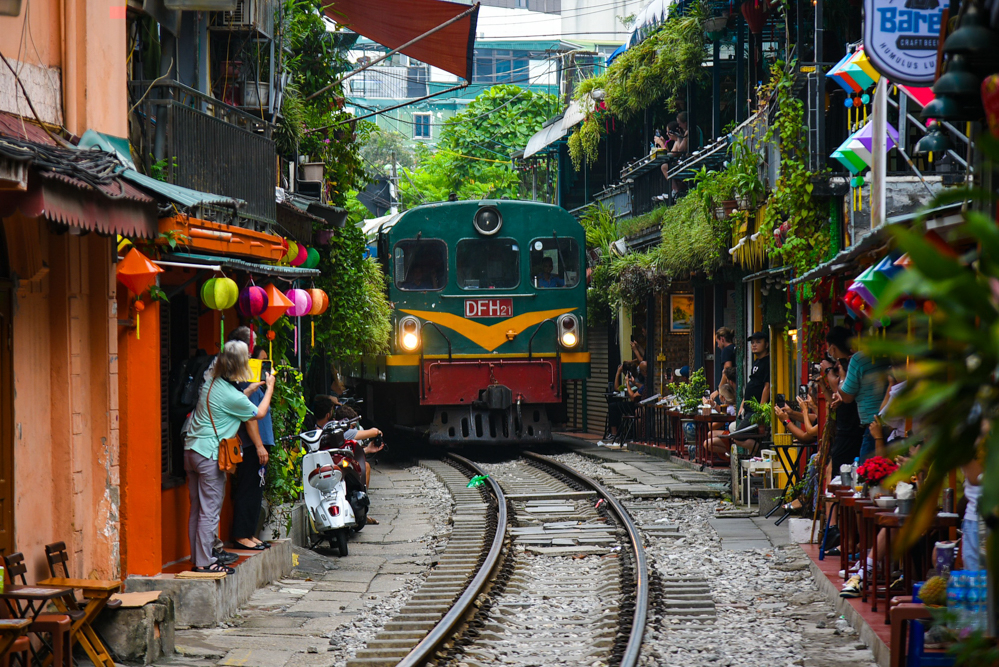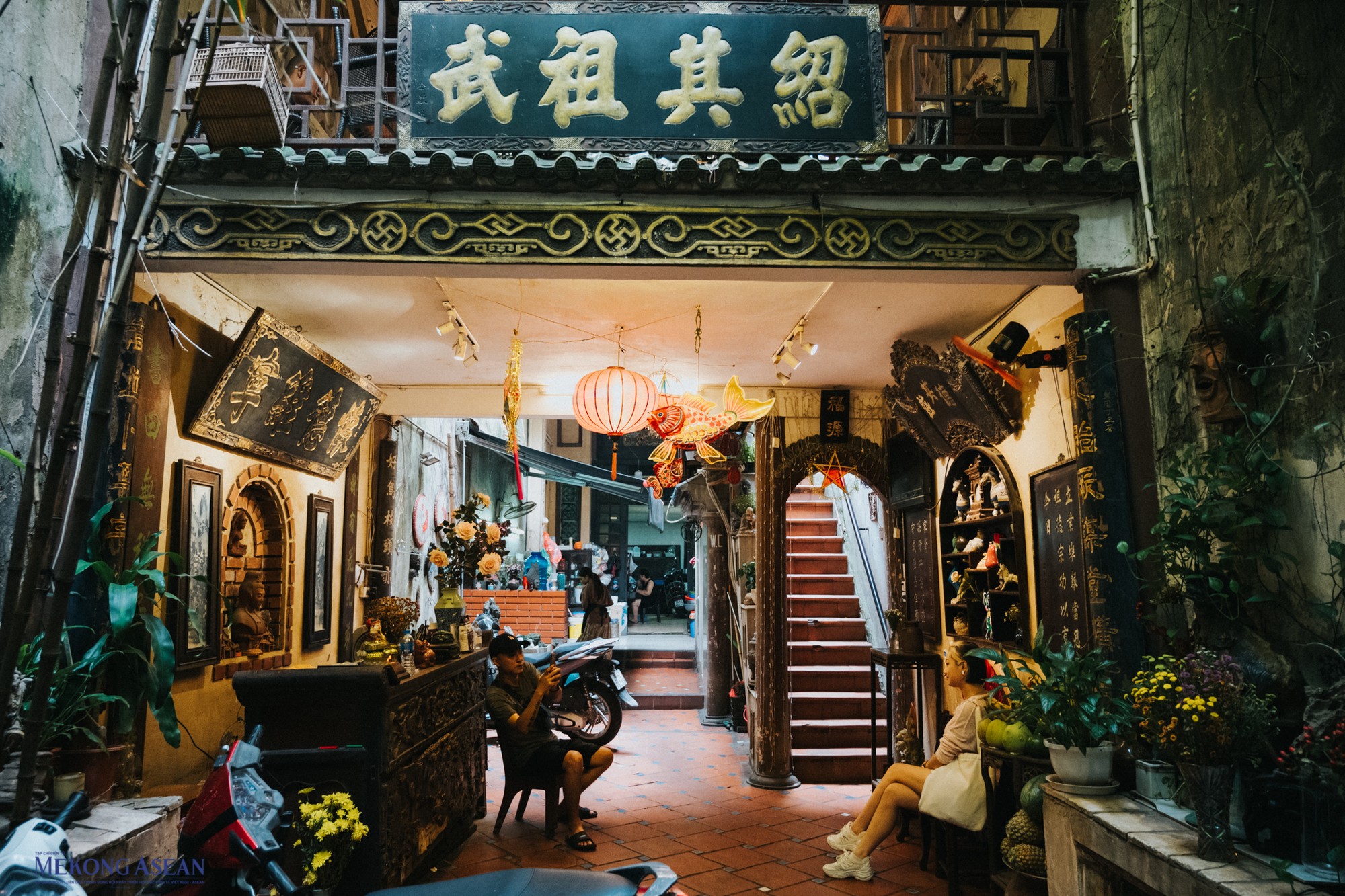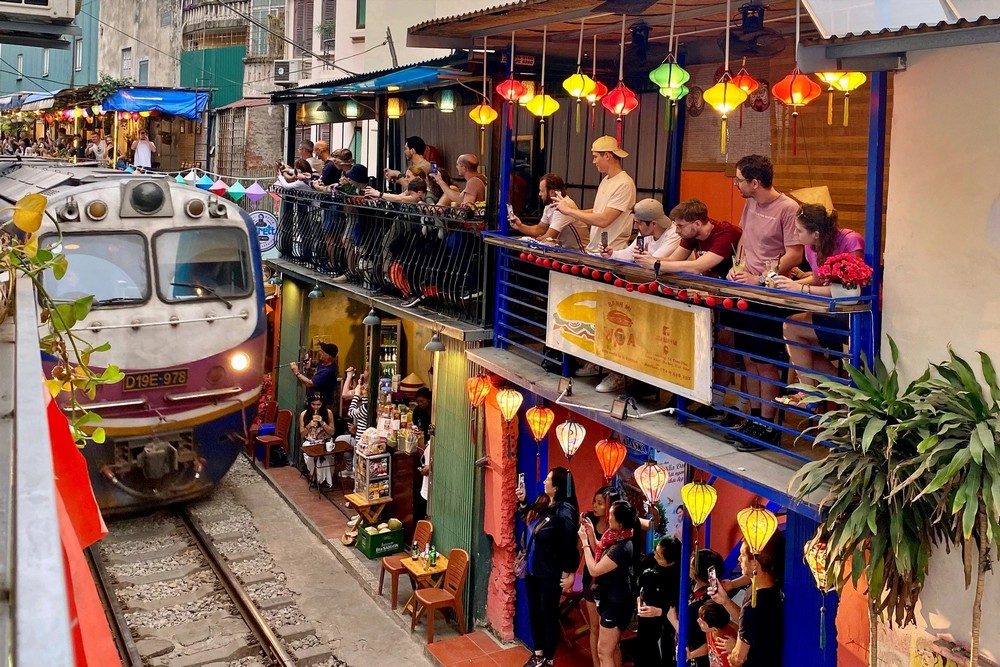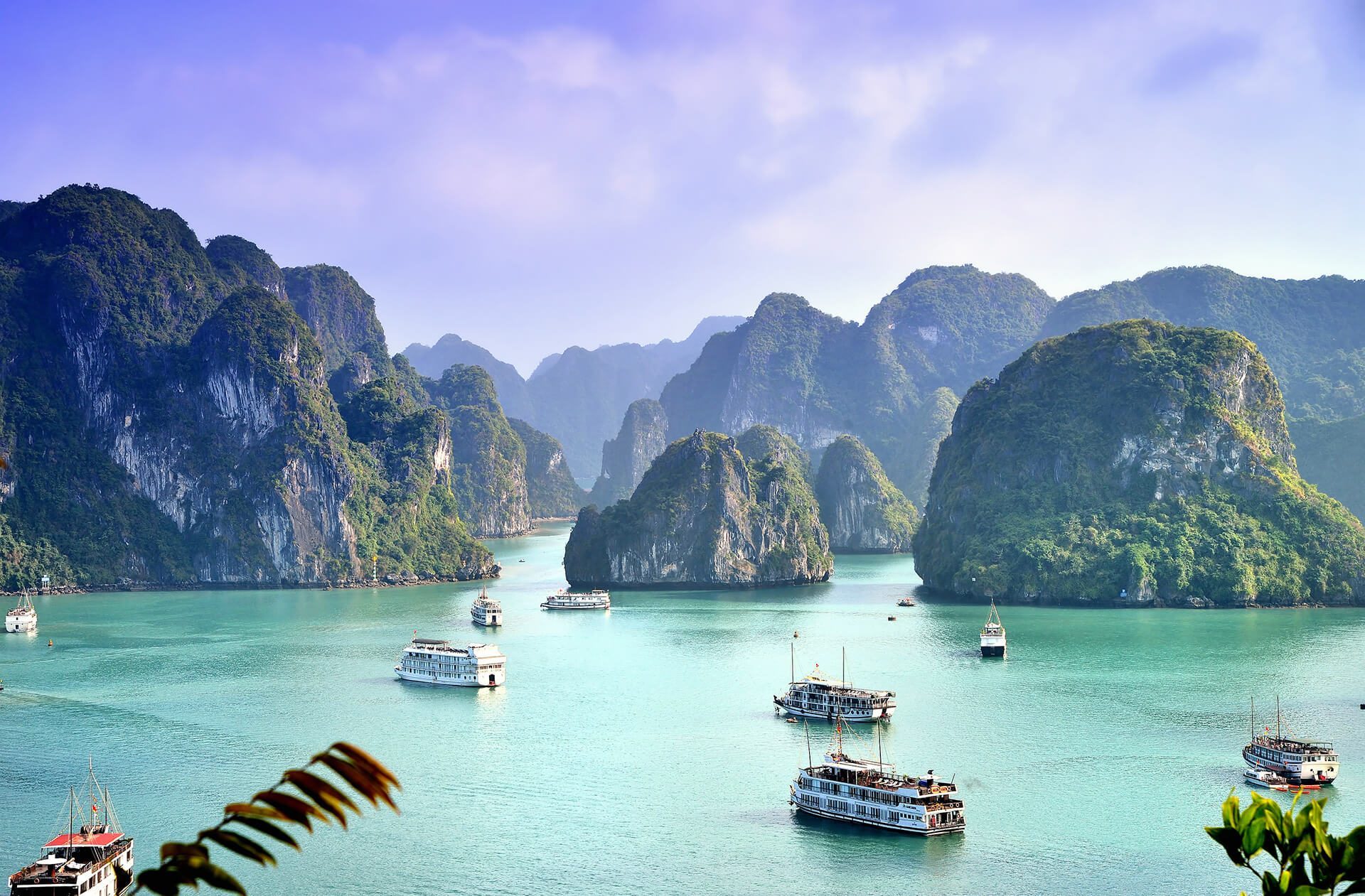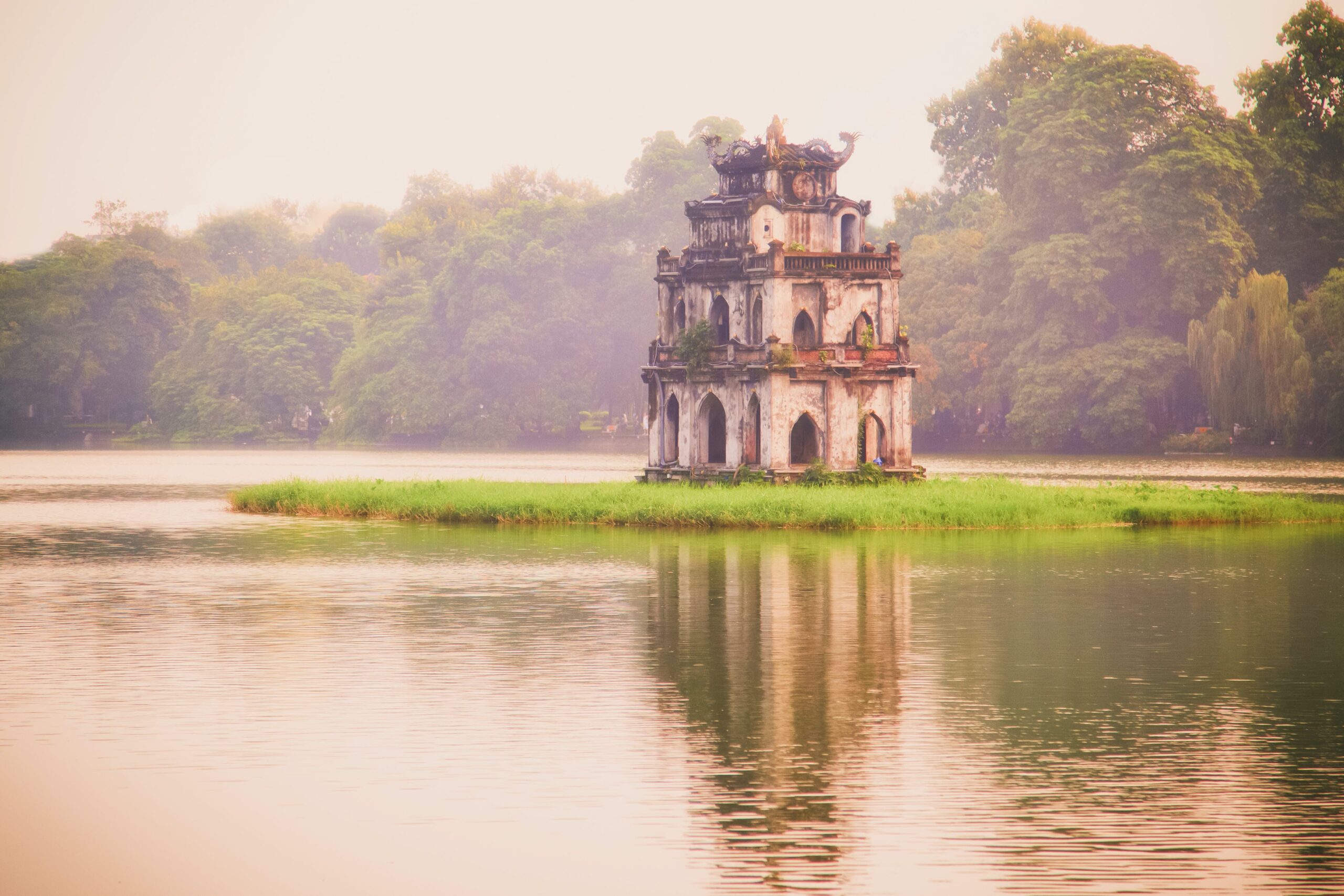
All Information Hanoi Travel Guide For Beginners
There are some million travelers visiting Hanoi, But if this is the first time you go to Hanoi, You need some information Hanoi Travel Guide. They will be helpful to you.
How to apply for e-Visa Vietnam
Depending on your nationality, you may need an e-visa and a medical declaration to visit Vietnam. I am a Philippine passport holder, so I can have visa-free entry to Vietnam for up to 21 days, but I want to stay a whole month. I applied for an e-visa online through iVisa.com, which allows me to stay up to 30 days.
Requirements and fees may vary depending on the passport you are carrying, so you can visit iVisa.com for more information and to apply. In my case, the process was quick and easy.
Hanoi at a glance
Hanoi is the capital of Vietnam. Located on the banks of the Red River in the northern half of the country, it is the second most populous city in Vietnam after Saigon. It was the capital of French Indochina from 1902 to 1954, and later became the capital of reunified Vietnam after Korea won the Vietnam War.
Walking along the tree-lined boulevards, you will see that Hanoi is an ancient city. It celebrated its millennium in 2010, but is believed to be much older, having been inhabited since at least 3,000 BC. Traces of Chinese and French colonial influence can be seen everywhere, especially in the Old Town and the French Quarter, home to thousands of colonial-era buildings.
Dubbed the “City of Lakes”, Hanoi has more than 20 lakes and a climate of four seasons a year.
Best time to visit Hanoi
Technically, Hanoi has two main seasons – the rainy season (May to September) and the dry season (October to April) – although it experiences weather variations that can simulate four seasons. For the best weather, it is best to visit Hanoi in spring (February to April) or autumn (October to November).
February to April: Spring is one of the best times to visit Hanoi. The weather is mild with temperatures ranging from 15-20°C (59-68°F). From February to March, the sky is clear, but in April, it starts to drizzle more often. Note that spring can also coincide with Tet (late January or early February), the Vietnamese Tet. This is the most important celebration in Vietnamese culture, so many establishments will be closed during this time.
May-August: Like the rest of Southeast Asia, summer in Hanoi is hot and humid. The average temperature is about 32°C (90°F). Furthermore, it is the rainy season, with July-August having the most rainfall.
September to November: Like spring, autumn is the ideal time to visit Hanoi. The weather is mild with an average temperature of about 25°C (77°F). November, when the sky is bluer and the leaves turn yellow, is the perfect time to explore the tree-lined boulevards around Hoan Kiem Lake. Autumn is considered the most beautiful season to visit Hanoi.
December to January: Winter in Hanoi is said to be surprisingly cold for a Southeast Asian country. Temperatures average around 17°C (63°F) but have been known to drop below 10°C (50°F). The high humidity, cold wind, and lack of insulation in the building make it look even colder. If you decide to visit Hanoi in winter, remember to dress appropriately.
I’ve been to Hanoi twice – first in mid-April and most recently in early September. April didn’t rain at all, although I did experience periods of rain in September. April is a great time to visit, but I think November and March are even better.
Climate: Hanoi weather every month
For more information on the weather in Hanoi, check out the climate chart on Holiday-weather.com. I also create charts of average annual temperatures and precipitation, with the best months to visit highlighted in orange.
average temperature
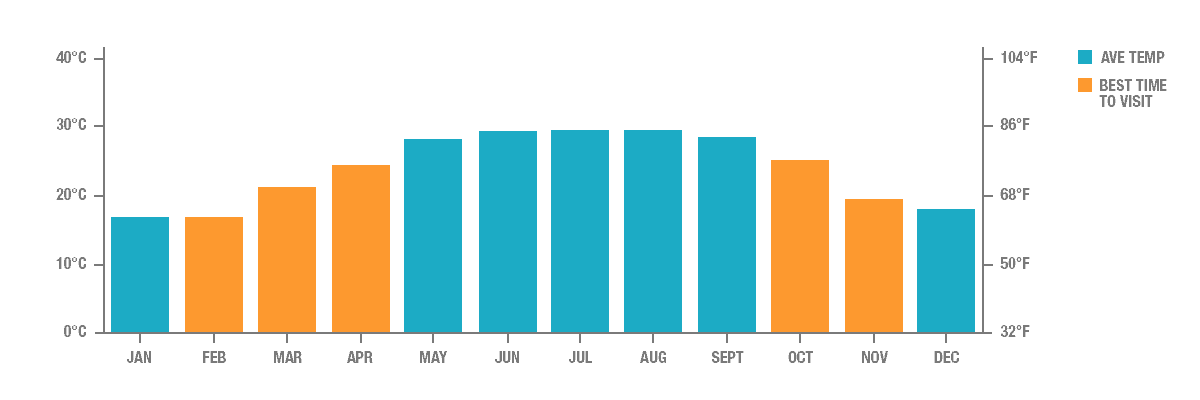
annual rainfall
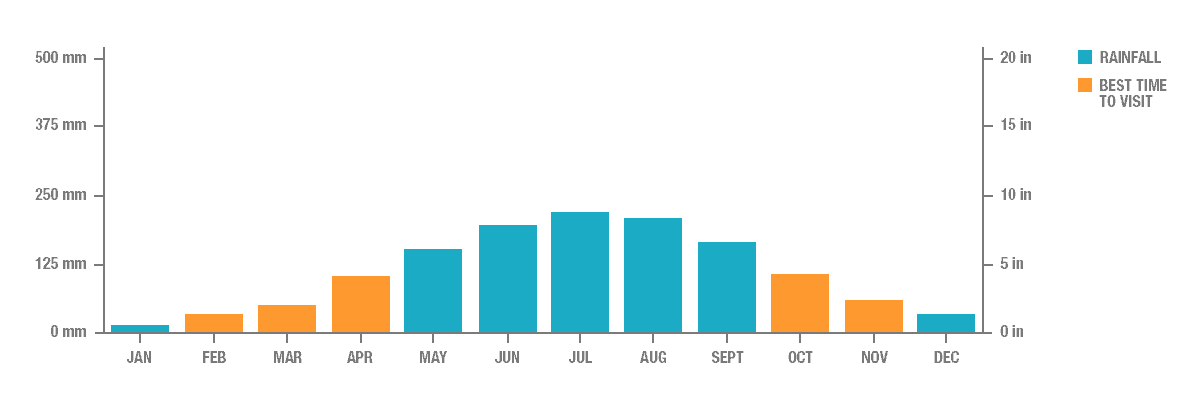
Transfer in Hanoi
Assuming Hanoi is your port of entry into Vietnam, you’ll likely arrive at Noi Bai International Airport, about 45 minutes from Hoan Kiem district. There are several ways to get from the airport to the hotel.
Private Transfer: I booked a private late-night transfer on both trips to Hanoi. You can contact your hotel and ask for their rates, or book a private transfer with Bookaway.
BY GRAB: In Vietnam, Grab is efficient and relatively cheap. I booked Grab to the airport in the early morning, 268k. At the time, it was less than 12 dollars.
By taxi: We don’t take a taxi, but taxi scams seem to be the only thing travelers complain about in Hanoi. According to my research, the price from the airport to the old town is about 16$-18$ so don’t be fooled. The row inside is known as a hotspot for taxi scammers, who will try to overcharge you or send you to the wrong hotel in hopes of getting a commission. To avoid falling victim to scams, arrange a separate transfer or use Grab instead. They are cheaper and more reliable.
By private bus: Jetstar, Vietnam Airlines, and Vietjet operate private minibusses that transport passengers from the airport to designated stops in Hanoi (and vice versa). I don’t know how much Jetstar or Vietnam Airlines charge, but Vietjet one way connecting flight is 40,000 VND (less than 2 USD). Follow this link to learn more about the Hanoi airport minibus.
We fly to Hanoi, but there are other ways to get there depending on your location. I recommend checking out Bookaway to find the routing options that work for you. You can click the link or use the widget below.
Where to exchange foreign currency?
The currency unit of Vietnam is Vietnam Dong (VND). The best places to exchange foreign currency are banks and gold/jewelry shops.
We have exchanged money at gold shops and banks and both have very good rates. I heard that you can also change money in hotels and some restaurants, but the exchange rate is usually not very good. The same goes for airports. If you’re arriving by plane and need to exchange money, exchange a small amount at the airport, enough to get you to your hotel and exch, and the rest in the city.
Thanks to a tourist’s recommendation, I changed money at two gold shops in Hanoi – Kim Linh and Quoc Trinh Gold and Silver. Both are located in the old town, and both are very well-priced. You can refer to this article for a list of recommended money changers and banks in Hanoi.
Another option if you don’t want to carry too much foreign currency with you is to withdraw Vietnam Dong from an ATM. More convenient, and the price is the same. Just make sure to let your local bank know that you plan to use your ATM card abroad so you don’t run into any problems. In my experience, my ATM card works on some machines but not on others.
Note: Some ATMs may ask you if you want to “make or not switch”. Always select “Do not convert” to have your local bank perform the conversion. Exchanges are made by foreign banks that are authorized to operate ATMs, often at very low rates. According to the article, the difference in rates can be up to 10%.
The best area to stay in Hanoi
If this is your first time in Hanoi, I think Hoan Kiem Old Quarter is the best place to stay. It is located in the heart of the tourist district and is closest to many of the city’s top attractions.
Some of the most convenient areas to stay in Hanoi are listed below, with color maps to help you better understand where each area is located. Click the link to see a live version of the map. (Please note marked areas are approximate only)
Red – Green Hoan Kiem – Green Ba Dinh – West Lake
I will provide targeted links under each description, but you can book accommodation in Hanoi through Booking.com or Agoda.
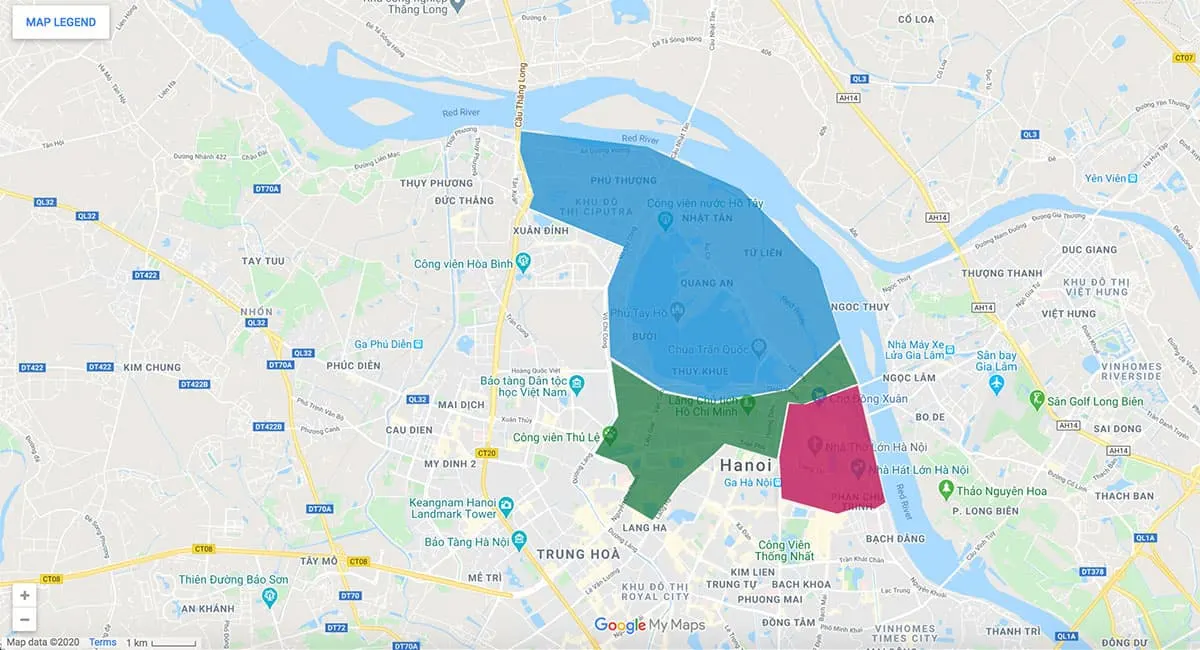
Return the Hoan Kiem District
Hoan Kiem District is the area around the lake of the same name. It is the most popular tourist area of the city and home to the Old Town. With so many hotels, cafes, shops, and restaurants in the Hoan Kiem district, you can really sell your time in Hanoi without leaving Hoan Kiem.
We stayed at Hanoi Town Hotel on our first trip to Hanoi. It’s not the most modern hotel, but the rooms are large and the location is ideal. It is located at the northern end of the old city, about halfway between Hoan Kiem Lake and can book rooms at Hanoi Town Hotel through Agoda.
If you are thinking of staying in Hoan Kiem but don’t think this hotel is for you, you can search for other listings on Booking.com or Agoda. You can also narrow your search to the old town (Booking.com | Agoda) or the Backpacker area. Both are smaller popular areas in the Hoan Kiem district.
Some of the most popular hotels in Hoan Kiem are listed below.
Ba Dinh
Ba Dinh is the area west of Hoan Kiem and south of West Lake. There are historical attractions such as the Ho Chi Minh Mausoleum, the Temple of Literature, and the Imperial Citadel of Thang Long. On my most recent trip, I stayed at the intersection of Ba Dinh and Hoan Kiem, just one street from Hanoi Train Street. After Hoan Kiem, I think the eastern half of Ba Dinh is the next best place to stay in Hanoi.
My Airbnb listing is huge and has one of the best rooms I’ve stayed in in Vietnam. I love it so much I’ve been there twice with my feet apart. You can book the same room on AirBnB, or find alternative listings in Ba Dinh on Booking.com or Agoda.
Check out some popular places to stay in Ba Dinh Province.
West Lake
This is the area around West Lake, the largest freshwater lake in Hanoi. It’s a quiet and pleasant area with nice hotels, but a bit far from Hoan Kiem. Unless you live at the southern end of the lake, you’ll need to take a Grab to the city’s main business district. You can search for hotels in West Lake through Booking.com or Agoda.
Check out some of the top-rated hotels in the West Lake area.
You can also use the handy map below to book hotels and B&Bs in Hanoi.
Scenic spots in Hanoi
1. Explore historic Hanoi
Hanoi is fun. It may be old and dilapidated, but it’s a city full of character. With loads of French colonial architecture, lakes, and tree-lined boulevards, it’s a fun place to experience walking. Unlike Saigon, this is a very walkable city that you can explore in about two days.
You can refer to our Hanoi itinerary for suggestions on places to visit. You can easily explore Hanoi on your own, but if you want to join a guided tour, you can book through Klook or Get Your Guide.
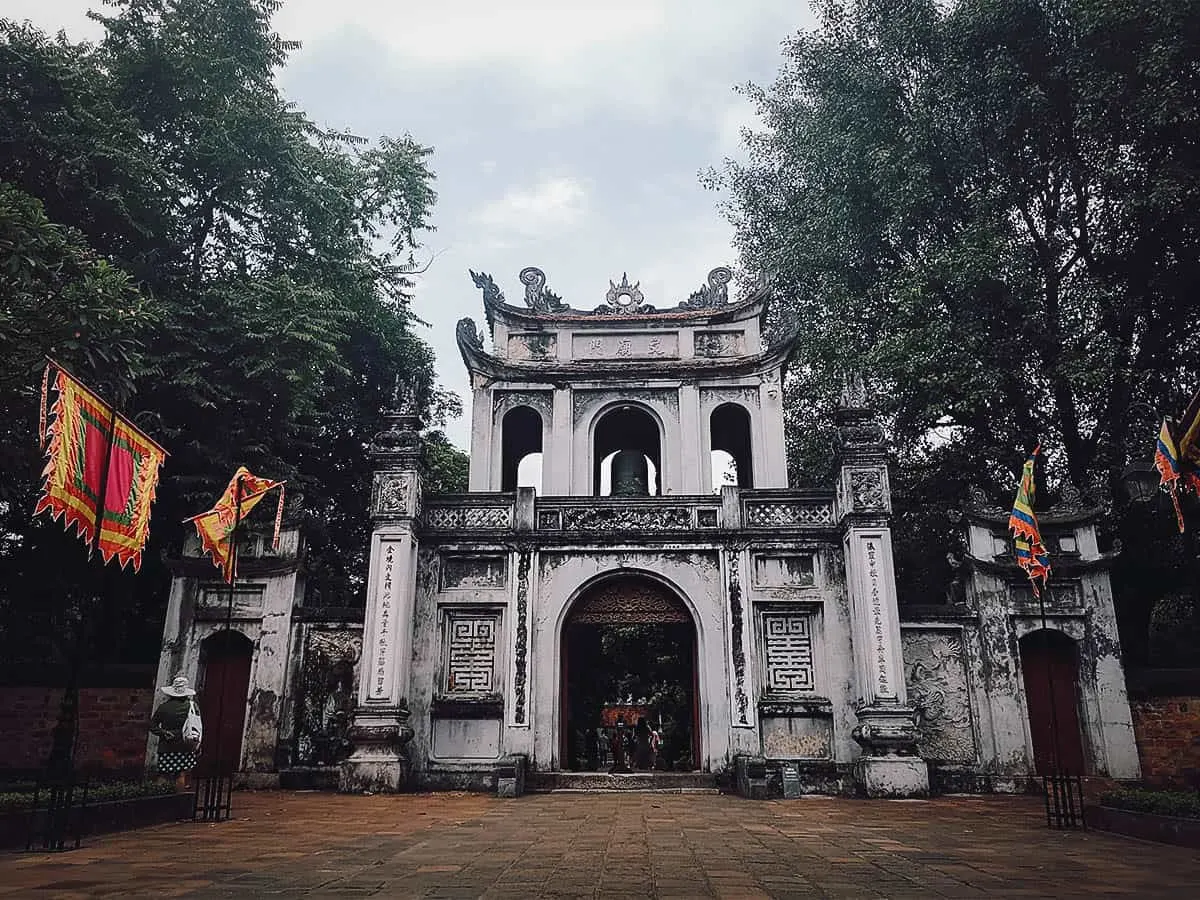
Visit the interior of Hoa Lac Prison (also known as “Hanoi Hilton Hotel”). Now a museum, it was once a prison used by the French colonialists to hold political prisoners, and later used by North Vietnam to hold American prisoners during the Vietnam War.
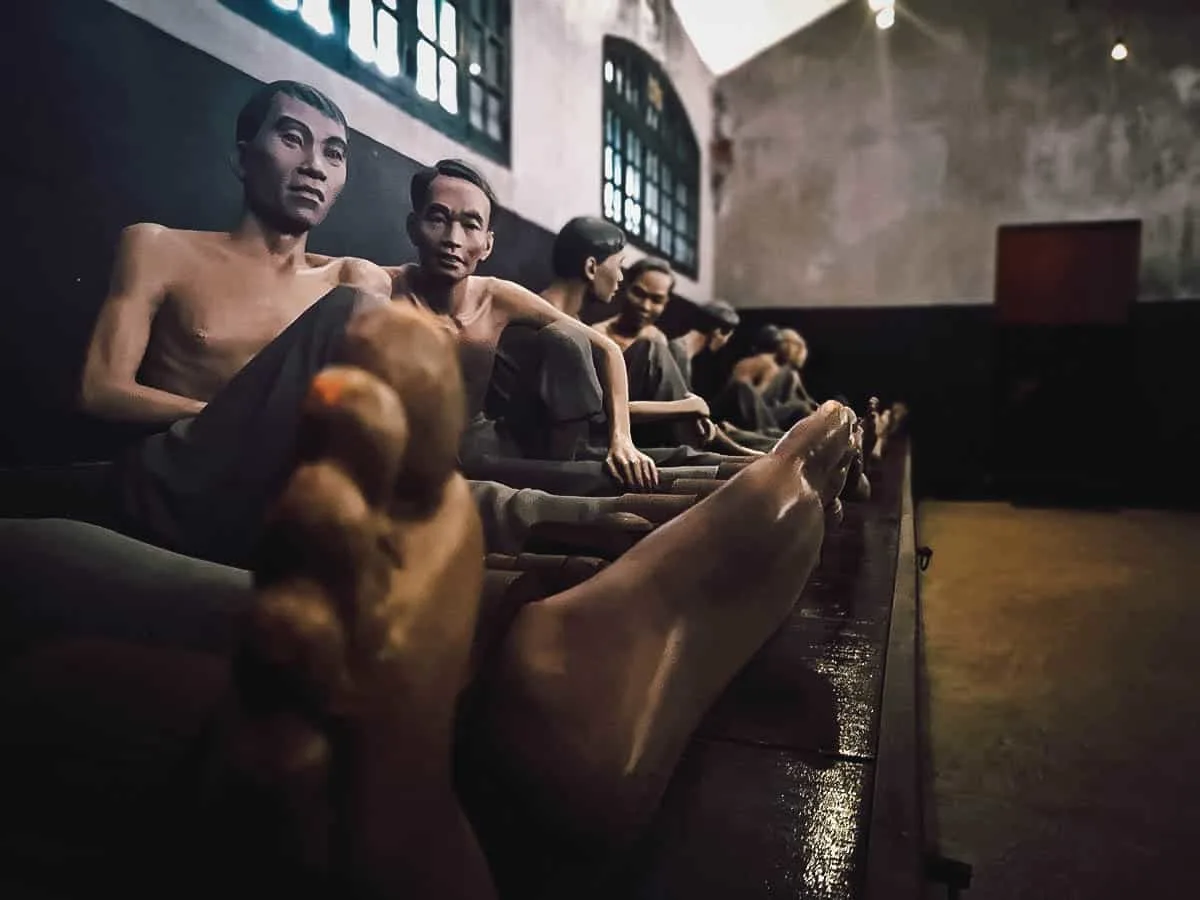
Estimated time of use: Full-day Ticket: Varies (per attraction)
2. Take a selfie on the train
I find it strange that an ordinary train track can become such a popular tourist attraction in Hanoi, but that’s exactly what happened in Chinatown. I think we should thank Instagram for that.
You may have seen photos of these tracks running through narrow residential corridors on social media. The racetracks have become so popular that cafes have sprung up on both sides of the road. I imagine you’ll find clusters of cafes at various points along the train tracks, but the photo below was taken near my Airbnb, between Ly Nam De and Phung Hung streets. Streets these streets to and from Old Town every day.
You can easily find and explore these streets, but if you are a serious Instagram user who wants to take you to some of the best sights of Hanoi, then you may be interested in this Hanoi Instagram Tour. You’ll ride a motorbike to Hanoi’s most Instagram-famous spots such as Long Bien Bridge, Phong Hung Mural Street, and Train Street.
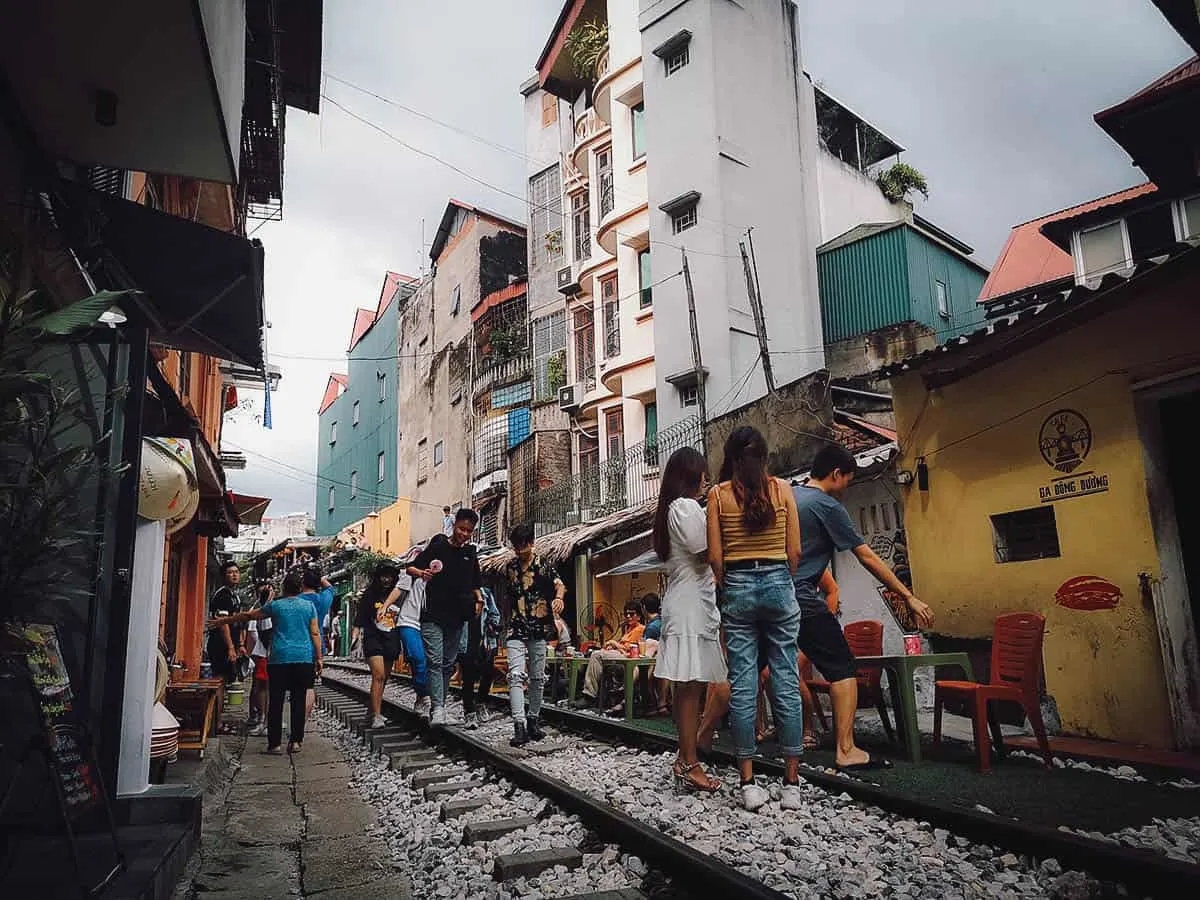
Note the signs below. These are active and potentially dangerous train tracks, which is why it’s odd to find a cafe with outdoor seating on both sides. I’m never here when the train passes, but the train runs along this track several times a day. I’m curious about what people do when this happens. Do they clear tables and chairs? The narrow corridor looked like it was barely big enough for a train to pass through.
According to this CNN article, the situation got out of control, so the local government forced the cafes to close. Whether this is enforced remains to be seen. In case you were wondering, trains pass through here carrying passengers and cargo between Hanoi and Hai Phong.
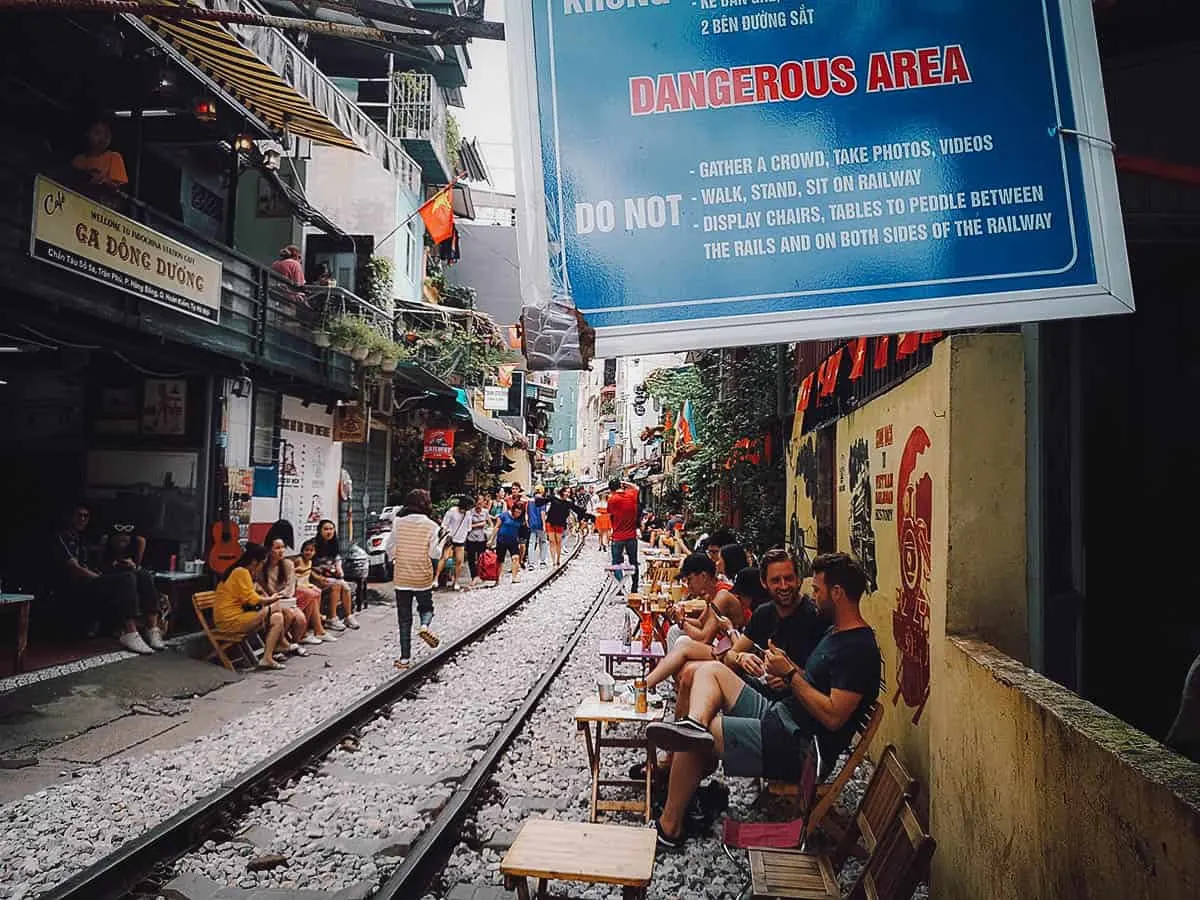
3. Watch the water puppet show
If you love unique cultural performances of Vietnam, you may want to check out a water puppet show at Thang Long Water Puppet Theater. Located on the banks of Hoan Kiem Lake, you’ll enjoy an hour-long water puppet show re-enacting Vietnamese folk tales and legends, along with a live orchestra.
I bought a ticket for a show at the door on the same day, but if you want to see a show during the tour, maybe a guide can explain it to you, you might be interested in Hanoi cities. Check it out via Klook and get your guide for the tour. They finally got tickets to the water puppet show.
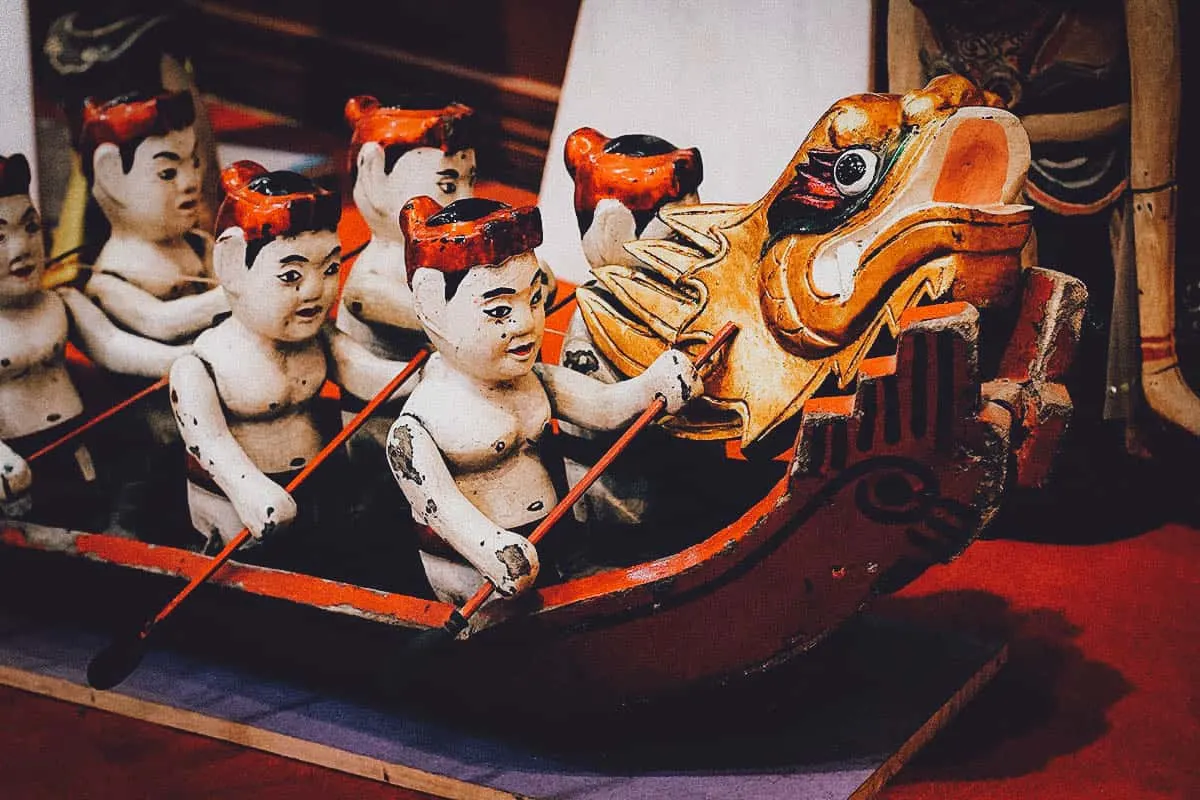
Performance time: about 1-hour Ticket price: from 100,000 VND
4. Integration into Phung Hung Wall Street
This is another popular scene in Hanoi and a stop on the aforementioned Instagram tour. Located on Phung Hung Street, parallel to Tau Street, this wall has about 20 murals depicting scenes of Vietnamese people’s daily lives. They’re drawn with life-sized characters, so they look almost lifelike in your photos.
When it comes to Instagram, if you want to elevate your profile, you should dress appropriately and rent Vietnamese ao dai and conical hats. They will take better pictures.
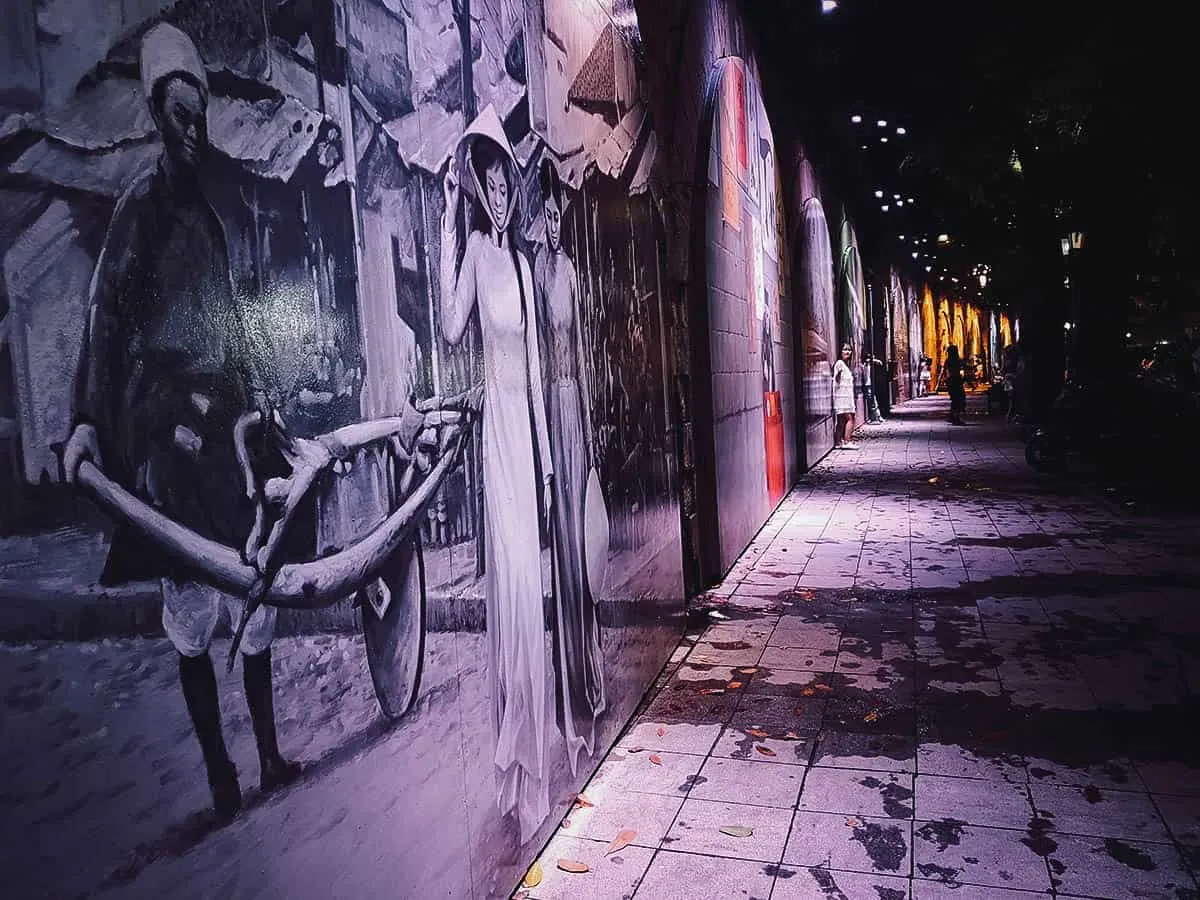
5. Culinary tourism
If you want to delve into the local cuisine, there’s no better way than taking a food tour. I’ve done food tours in many cities around the world, and they always take you to bold local places that aren’t easy to find on Google. I took two street food tours on a recent trip to Hanoi and both were excellent.
This Green Papaya Salad with Chinese Dried Beef was one of the dishes I ate during my Hanoi street food tour at Back Street University. It’s an epic 2.5-hour dining experience that takes you to some of the best local restaurants in Hoan Kiem for classic Vietnamese dishes like pho, ca cuon, and banh cuon. You can see my article on Hanoi street food tourism for more pictures and information.
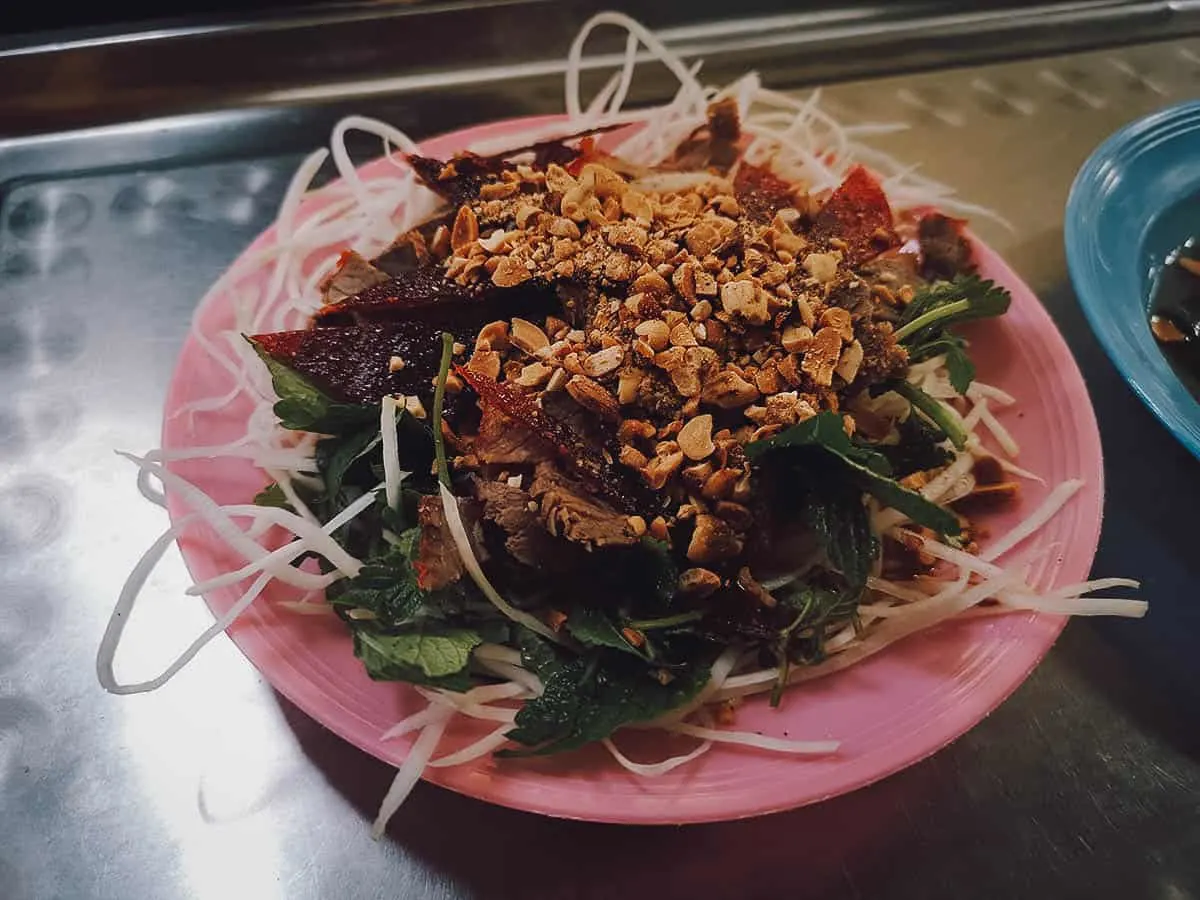
The second food tour I took was a chef-led culinary and market tour called A Chef’s Tour. Starts at 4:00 am and takes you to three of Hanoi’s busiest markets. If you love street photography as well as love street food, you might want to join this tour. In addition, chef-guided tours offer famous cooking classes in Hanoi.
If you want to select more food tours, you can check out Klook and get your guide. There are too many options!
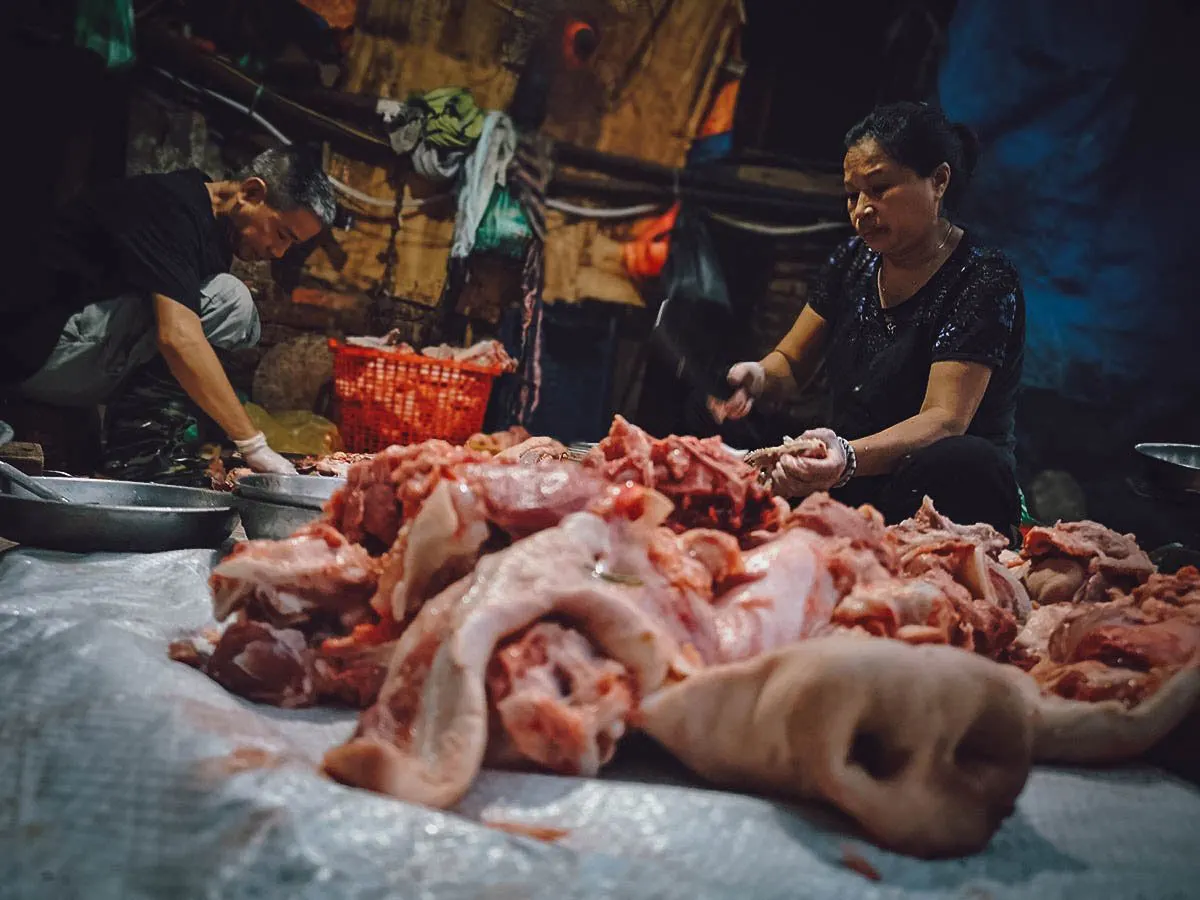
6. Coffee-tasting tour
Vietnam is the second largest coffee producer in the world after Brazil. The coffee they make is amazing, that’s why I recommend taking a coffee-tasting tour. I have explored as many cafes as possible in Vietnam, but for me, the ones in Hanoi are the most interesting. The city is known for its unique homegrown coffee creations, the most famous of which is egg coffee, or egg coffee.
It’s easy to get to the coffee shop on its own, but I did a great hike for coffee lovers with Backstreet Academy (no longer available). I was taken to three of the city’s oldest cafes to try interesting concoctions like egg coffee, yogurt coffee, and cinnamon coffee. I made a video of this experience that you can watch on our YouTube channel.
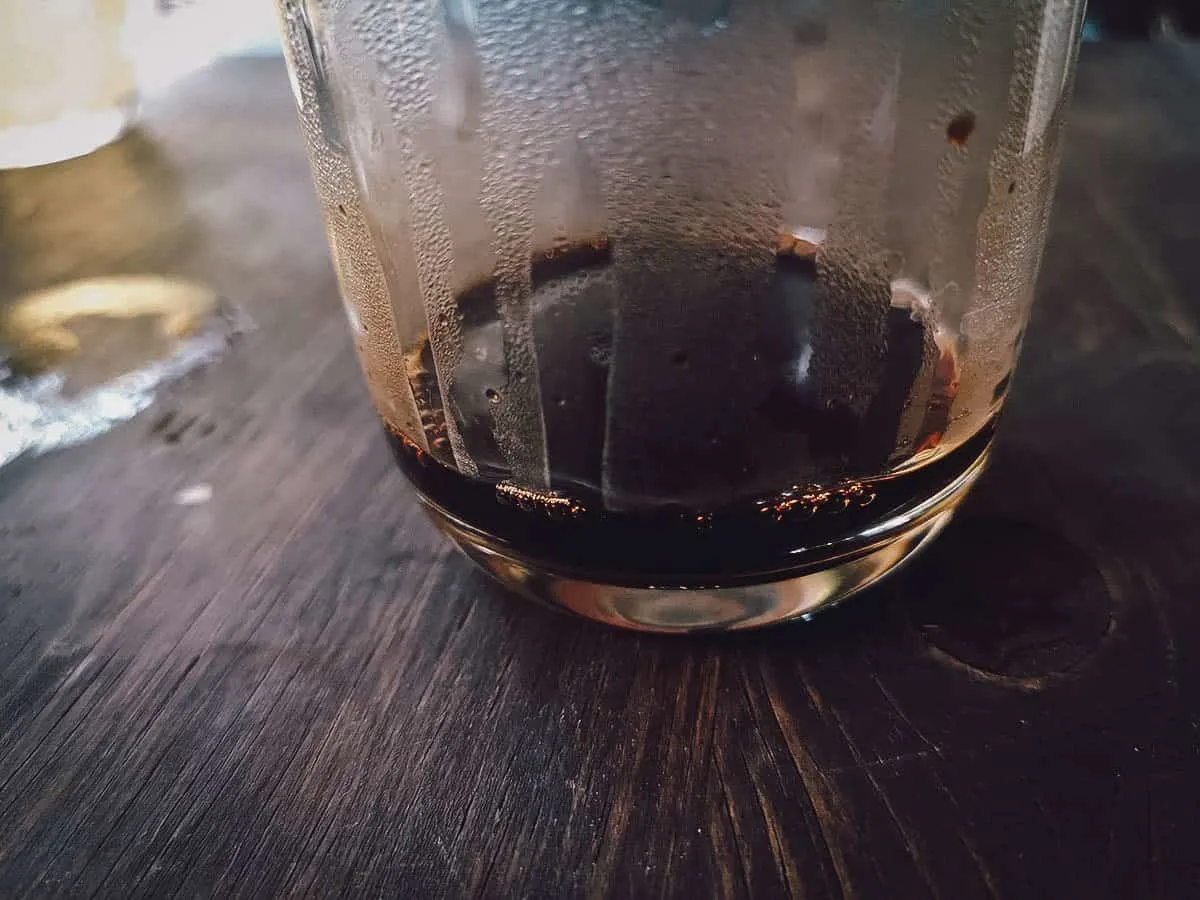
7. Take a cooking class
We had so much fun taking this cooking class in Hoi An so now we try to take a cooking class every time we travel. While we love exploring restaurants and taking food tours, there’s nothing like taking a cooking class to learn about the local cuisine. It’s like going behind the scenes for a delicious meal.
Cookly is a booking platform focused on one-day cooking classes. They offer cooking classes in many cities around the world, including Hanoi. Since they only specialize in cooking classes, I don’t think there is a better place to find cooking classes while traveling than Cookly. Click the link to see a list of their cooking classes in Hanoi.
As mentioned, one of the food tours I took was led by Chef Duyen, who also runs famous cooking classes in Hanoi. She is full of energy and knows her job, so you might want to check out her cooking class in Hanoi.
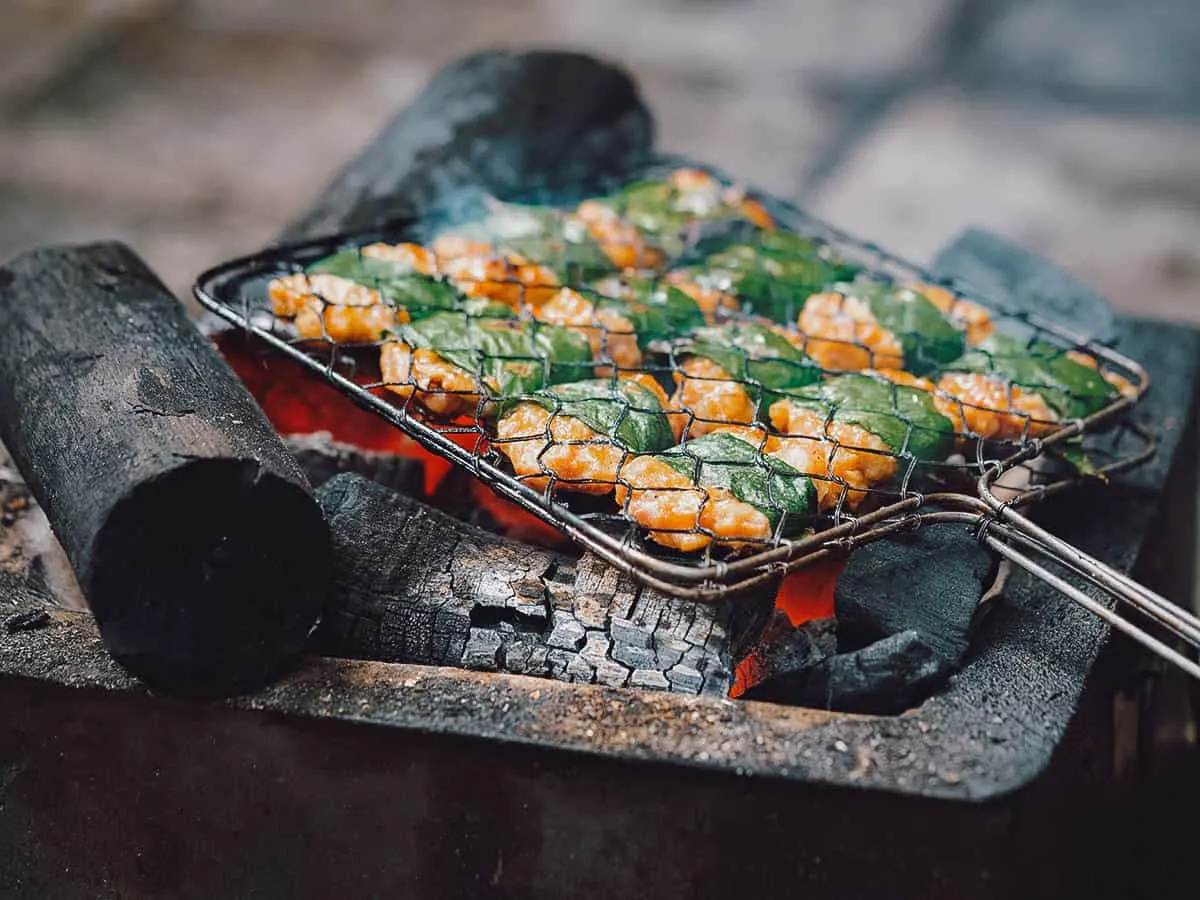
Image courtesy of Vietnam Pictures via Shutterstock
Excursions from Hanoi
1. Cruise on Halong Bay
Located about three hours east of Hanoi, Ha Long Bay is a UNESCO World Heritage Site and one of Vietnam’s most popular tourist attractions. It has turquoise water and about 2,000 small islands, most of which are made of limestone. It is possible to do day trips to Halong Bay, but in my opinion the best thing is an overnight cruise. If you’re in Hanoi long enough, a Halong Bay cruise is a must.
We booked the itinerary through Klook, but you can also check out Get Your Guide. Be sure to check out my article on Halong Bay cruises for more photos and information.

2. Hoa Lu, Tam Coc
Northern Vietnam is known for its impressive towering limestone landscape. There were still a few days left in Hanoi, and we decided to go to Hoa Lu and Tam Coc in Ninh Binh province for a day trip. About two-hour drive south of Hanoi, highlights include a visit to Jing Dinh Temple and a boat ride along the Hoang Long River, surrounded by rice fields and limestone mountains.
We booked this guided tour through Klook. You can also choose from several day trips to Hoa Lu and Tam Coc through “Get a Guide”. Check out my posts about Hoa Lu and Tam Coc for more pictures and information.
By the way, you can come across information about Truong An during your research. This is an area near Ninh Binh province, with a similar landscape to Tam Coc. They offer similar experiences, so travelers are sometimes confused as to which one to choose. We’ve never been to Chang’an, but some say the experience feels more unnatural than Sangu.

3. Sapa
Sapa is a mountain town in Lao Cai province, about 5-hour drive northwest of Hanoi. Known for its mountain climbing and rice terraces, it is one of the most popular tourist attractions in northern Vietnam.
You can check out our complete travel guide to plan an independent hike to Sapa. You can also read our guide on how to get from Hanoi to Sapa. If you want to book a walking tour, you can do so through Get Your Guide.
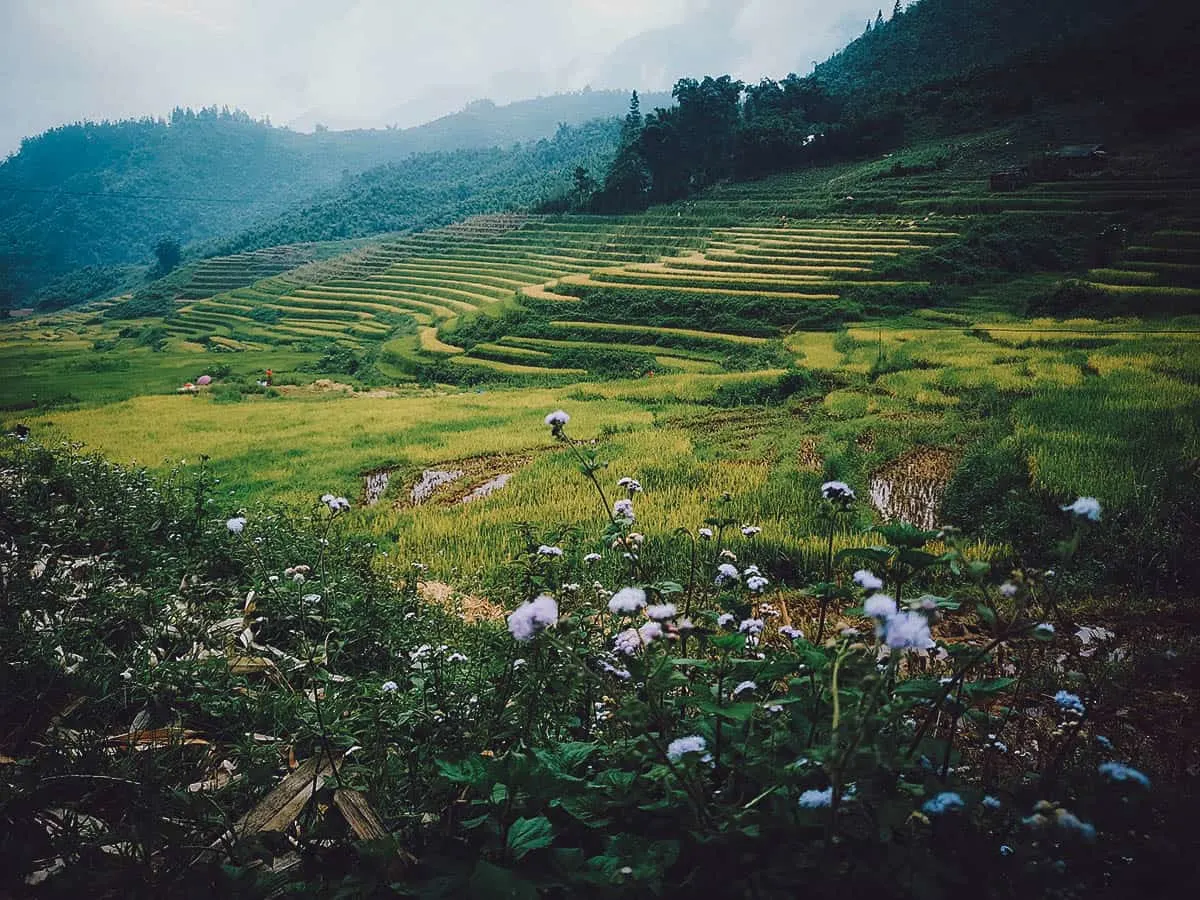
Handbook of Vietnamese cuisine
Before our first trip to Vietnam in 2017, Vietnamese food was not my favorite. Now second only to Japan. I have become a fan of Vietnamese food, so I created this growing guide to Vietnamese food. If you want to know about some of the most popular dishes in Vietnam, then this guide might interest you.
If you like the sweeter things in life, then be sure to check out our guide to traditional Vietnamese desserts.
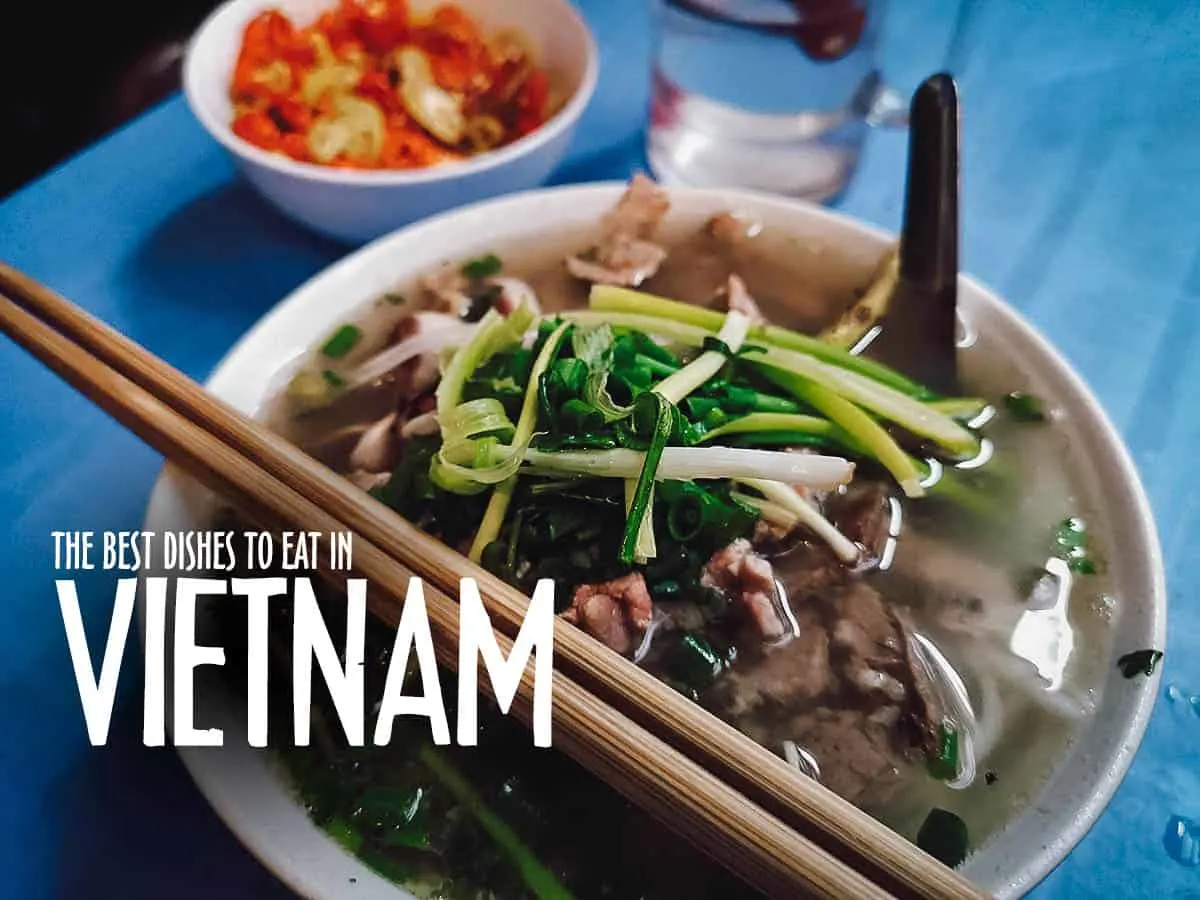
where to eat in Hanoi
While the previous link takes you to a general guide to Vietnamese cuisine, this Hanoi food guide lists 25 of the city’s best restaurants and street eateries. From national favorites like pho and banh mi to Northern delicacies like Bun Cha and Cha ca, this list takes you through some of the best restaurants in Hanoi.
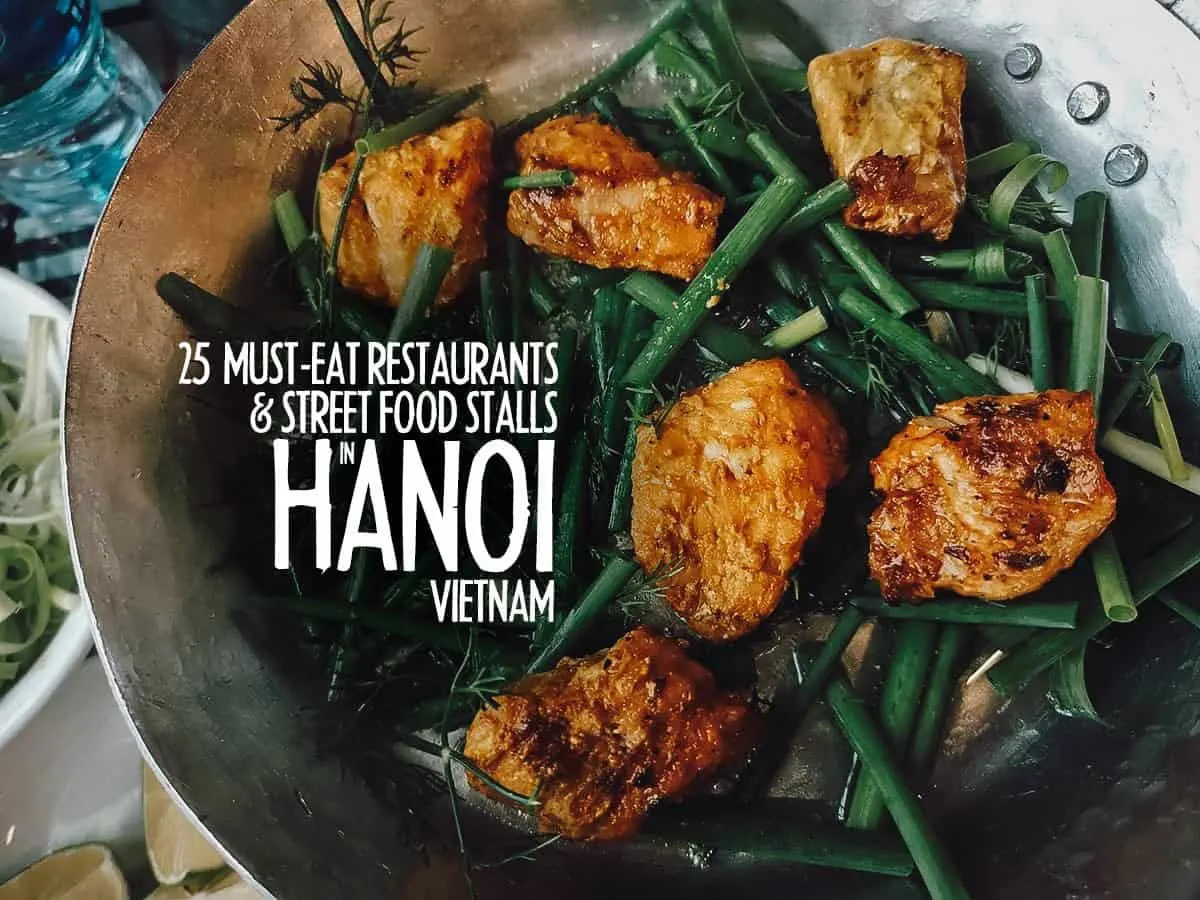
Twenty-five is probably too much for most people, so I’ve listed five of our favorites below to help you narrow down. Check out our Hanoi food guide for more photos and information about each restaurant.
1. Bun Cha 74 Hang Quat
This was probably the best meal I had in Hanoi. This place specializes in bun cha, a greasy pork dish grilled over charcoal and served with glutinous rice flour and fresh greens.
Bun Cha is a dish associated with Hanoi. Personally, this is one of my favorite dishes in Vietnam. I’ve been to five different Bun Cha places in town, but Bun Cha 74 Hang Quat is my favorite.
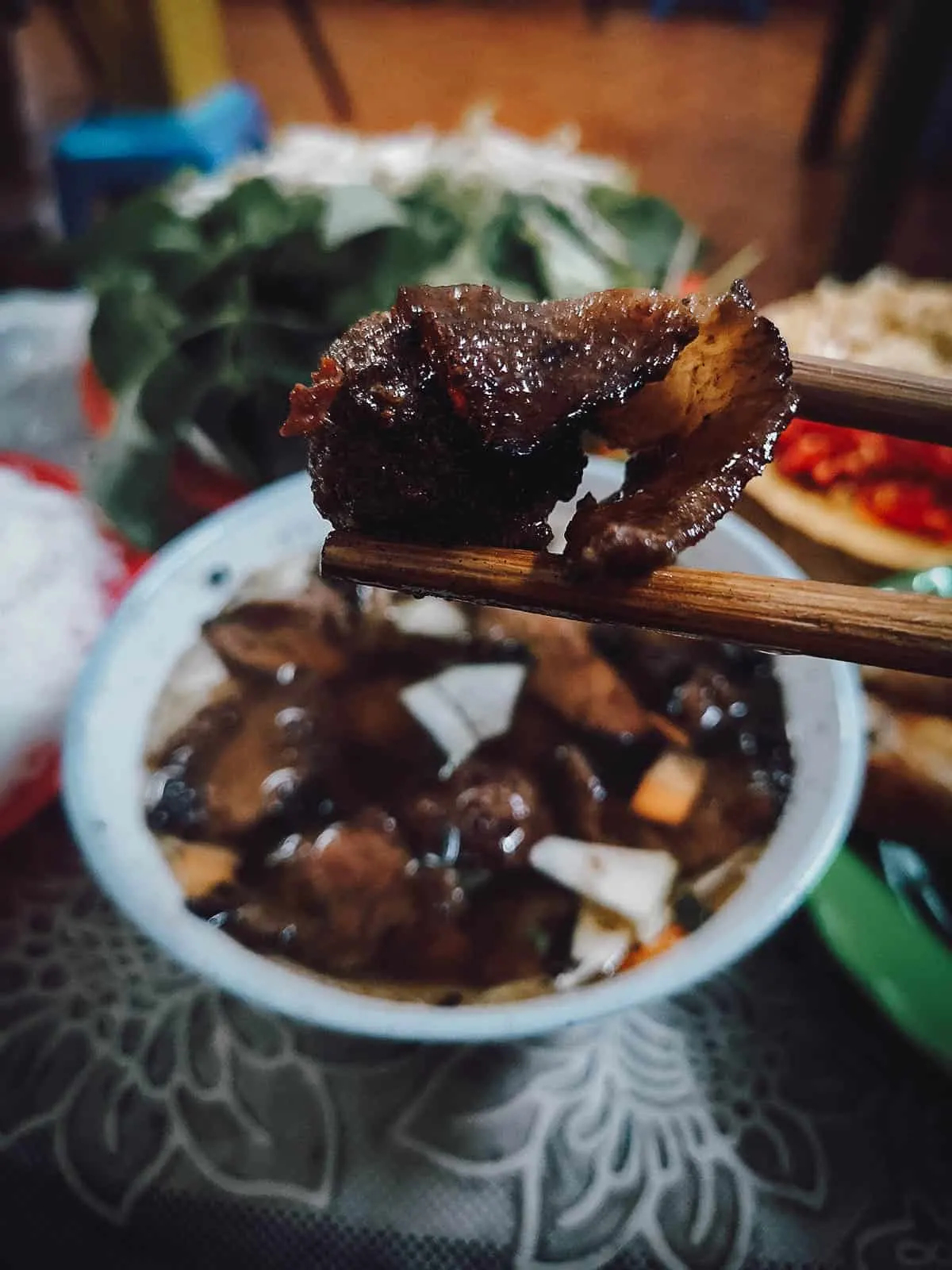
2. Pho
I think I’ve been to half a dozen pho shops in Hanoi, but pho is my favorite. It is located in a dark alley on the second floor of a building, one of the “hidden in sight” restaurants and cafes in Hanoi.
The restaurant is in someone’s home, so you’ll be eating bowls of noodles in their living room. No more homemade pho.
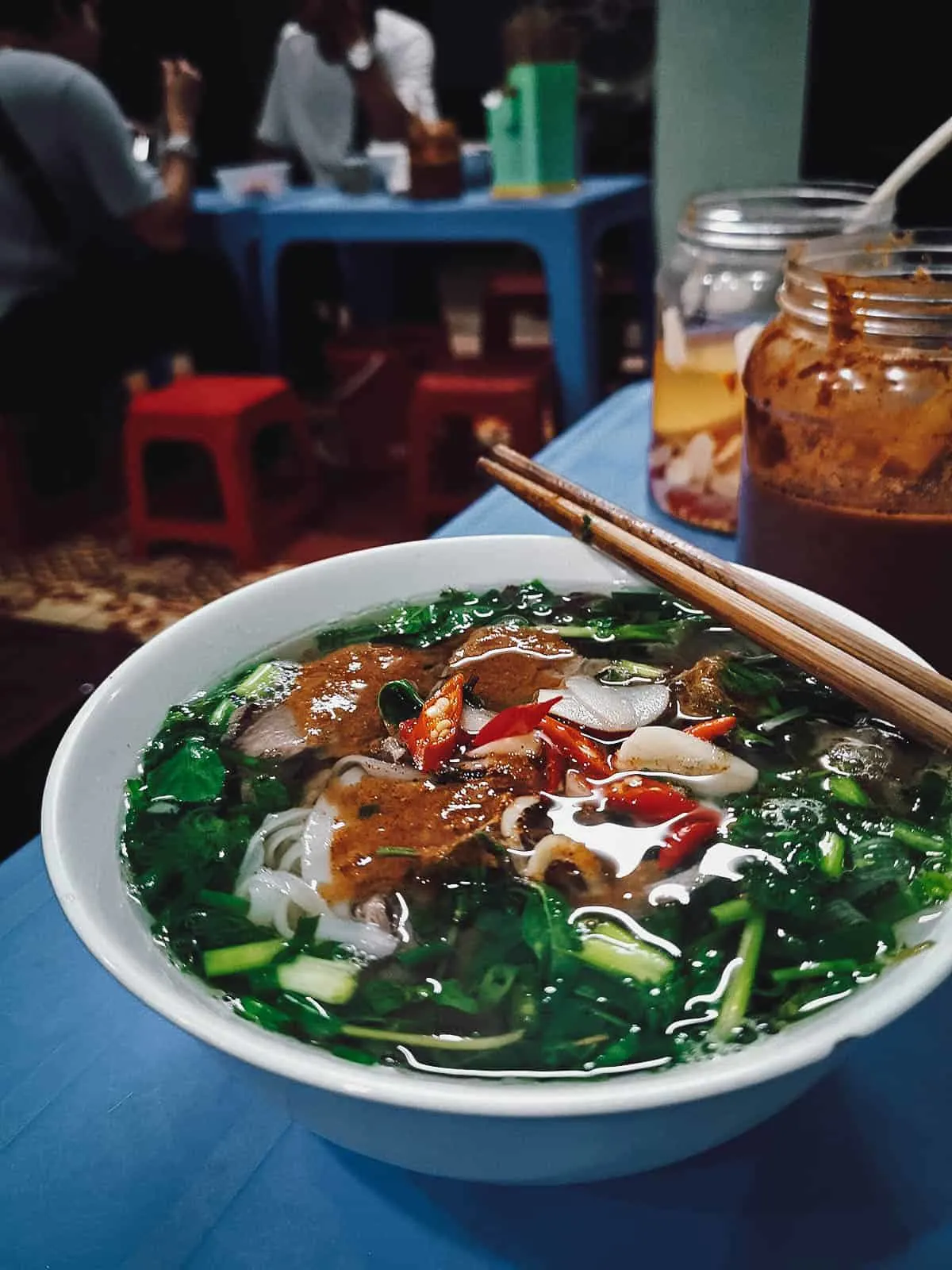
3. Thang Long fish cake
Cha ca is another dish originating from Hanoi. This is a delicious pan-fried breaded catfish with lots of fresh dill.
Cha fish comes with vermicelli, roasted peanuts and coriander, and a dipping sauce made from fish sauce, vinegar, and garlic. I have eaten cha ca three times in Vietnam, and for me, Thang Long fish cake is still the best.
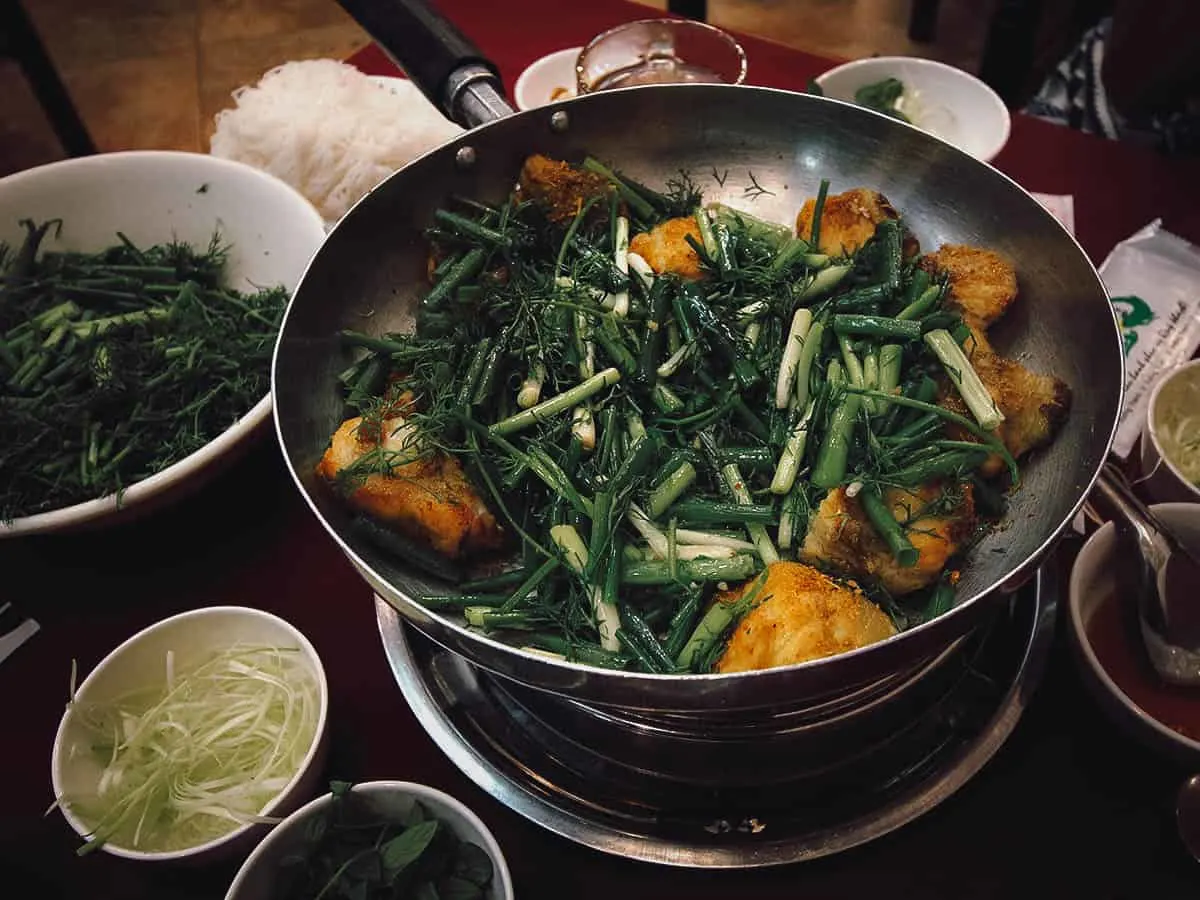
4. Banh Mi
To be honest, I find Hoi An and Saigon bread better than Hanoi bread. But I bet any banh mi in Hanoi still tastes better than most of the bread you find abroad!
I think I’ve eaten almost ten banh mi from different places in Hanoi, but this grilled chicken sandwich from Banh My P is my favorite. The bread is wonderful.
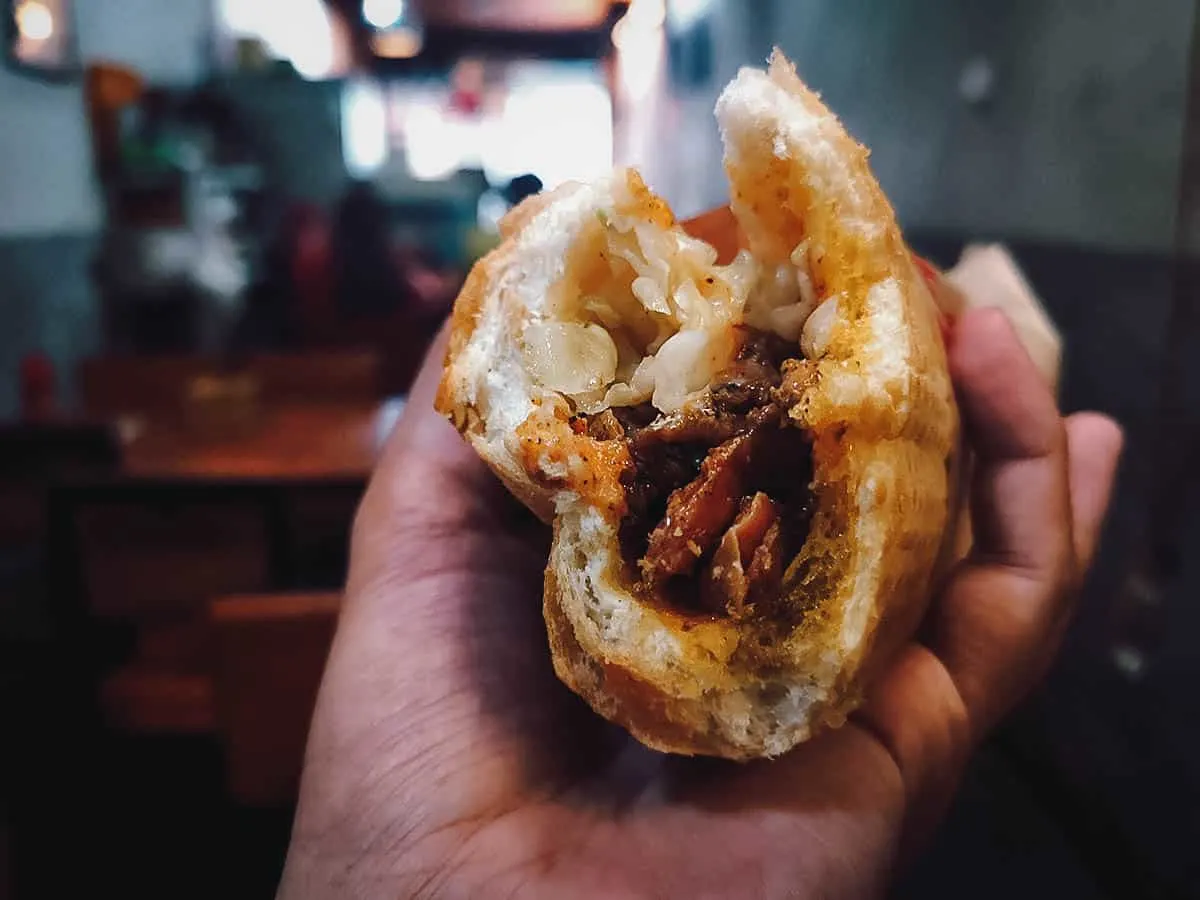
5. Pho Cuon
I don’t know if there’s a generic term for these dishes, but Quan Corner Stone specializes in Vietnamese fried foods.
They offer many different varieties, but the most popular is the pillow cake, which is like a Vietnamese empanada filled with minced pork, mushrooms, vermicelli, and quail eggs. They come with a basket of fresh green leaves and a lime dipping sauce.
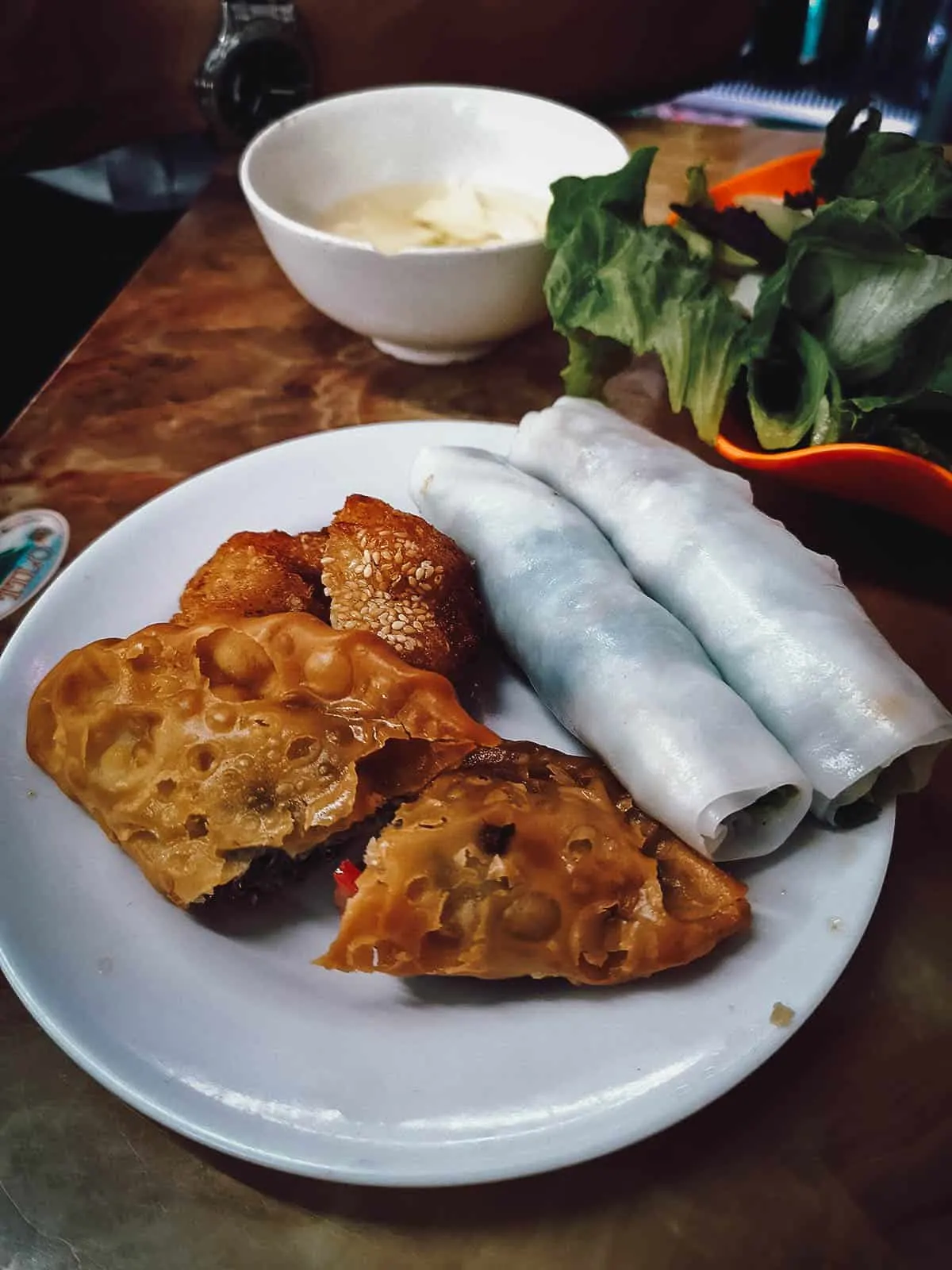
Coffee shops in Hanoi are worth a visit
As mentioned above, Vietnam is famous for its coffee. Hanoi has some of the coolest coffee shops in the country, serving up delicious coffee creations like egg coffee, yogurt coffee, and coconut milk coffee. I’m a coffee lover so I go to as many cafes as I can, you can read all of them on our Instagram list of must-see cafes in Hanoi.
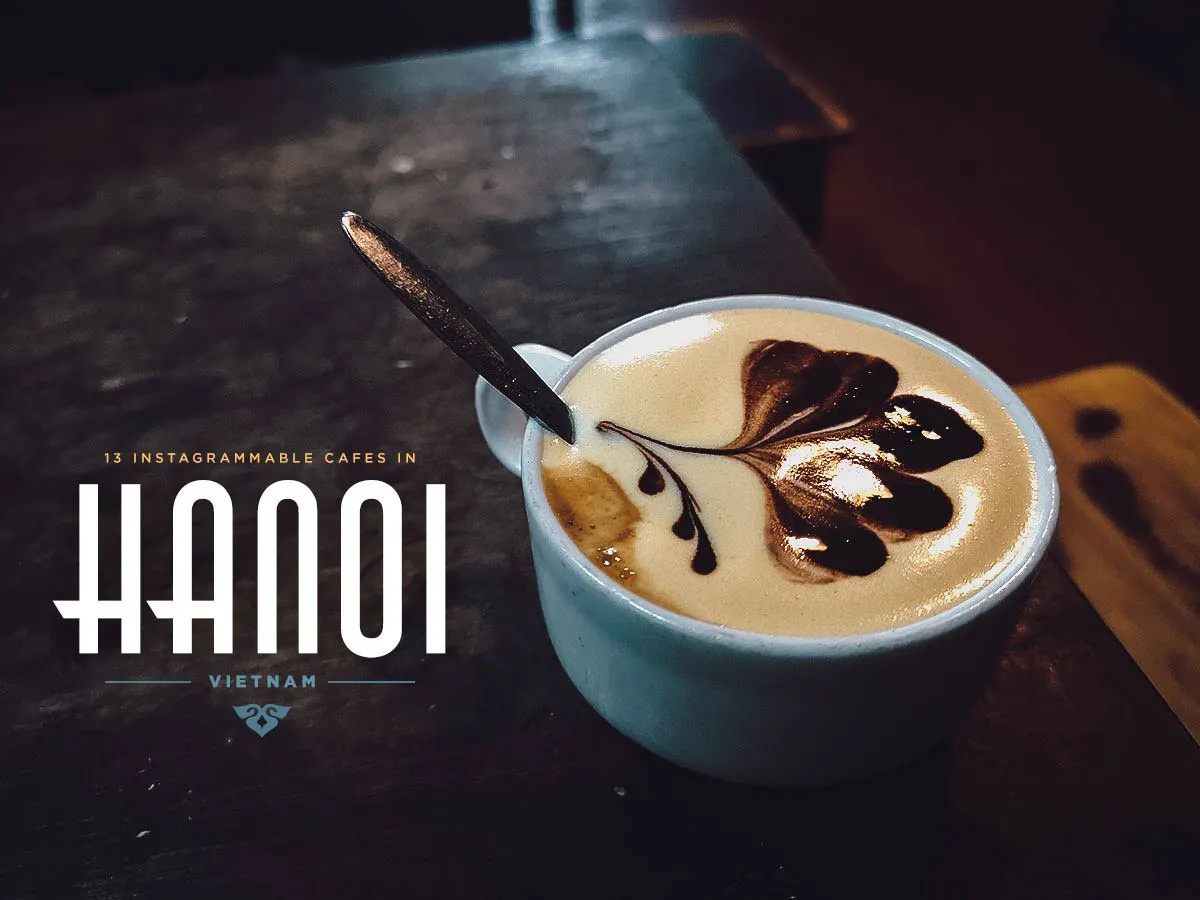
Like our Hanoi food guide, thirteen cafes might be too much for most people, so I’ve listed three of my favorites below. Check out our Hanoi coffee guide for more photos and information about these cafes.
1. Dinh Cafe
This was one of the cafes we visited during the Hanoi Coffee Lovers Walking Tour at Backstreet Academy. Cafe Giang is considered a great place to have egg coffee, but what most people don’t know is that Cafe Dinh is also owned by the same family. Cafe Dinh, near Hoan Kiem Lake, serves egg coffee just like Cafe Giang, but in a quieter, less crowded setting.
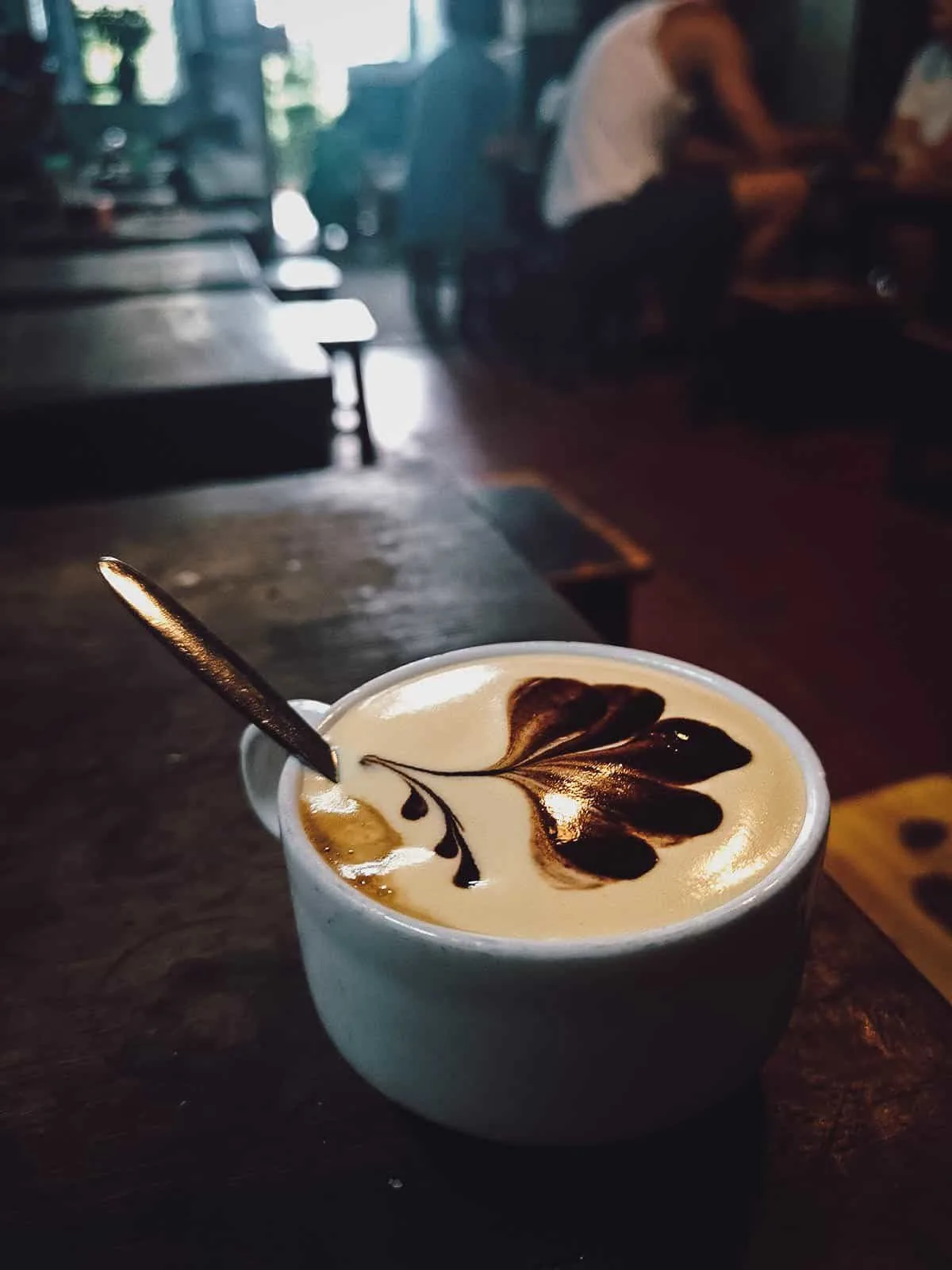
2. Tranquil Books & Coffee
Tranquil Books & Coffee doesn’t have the same history as Cafe Dinh, but it is one of my favorite coffee shops in Hanoi, mainly because of its cozy interior and relaxed feel. Feel like you are in a study or library. If you are a digital nomad, this is a great place to get work done.
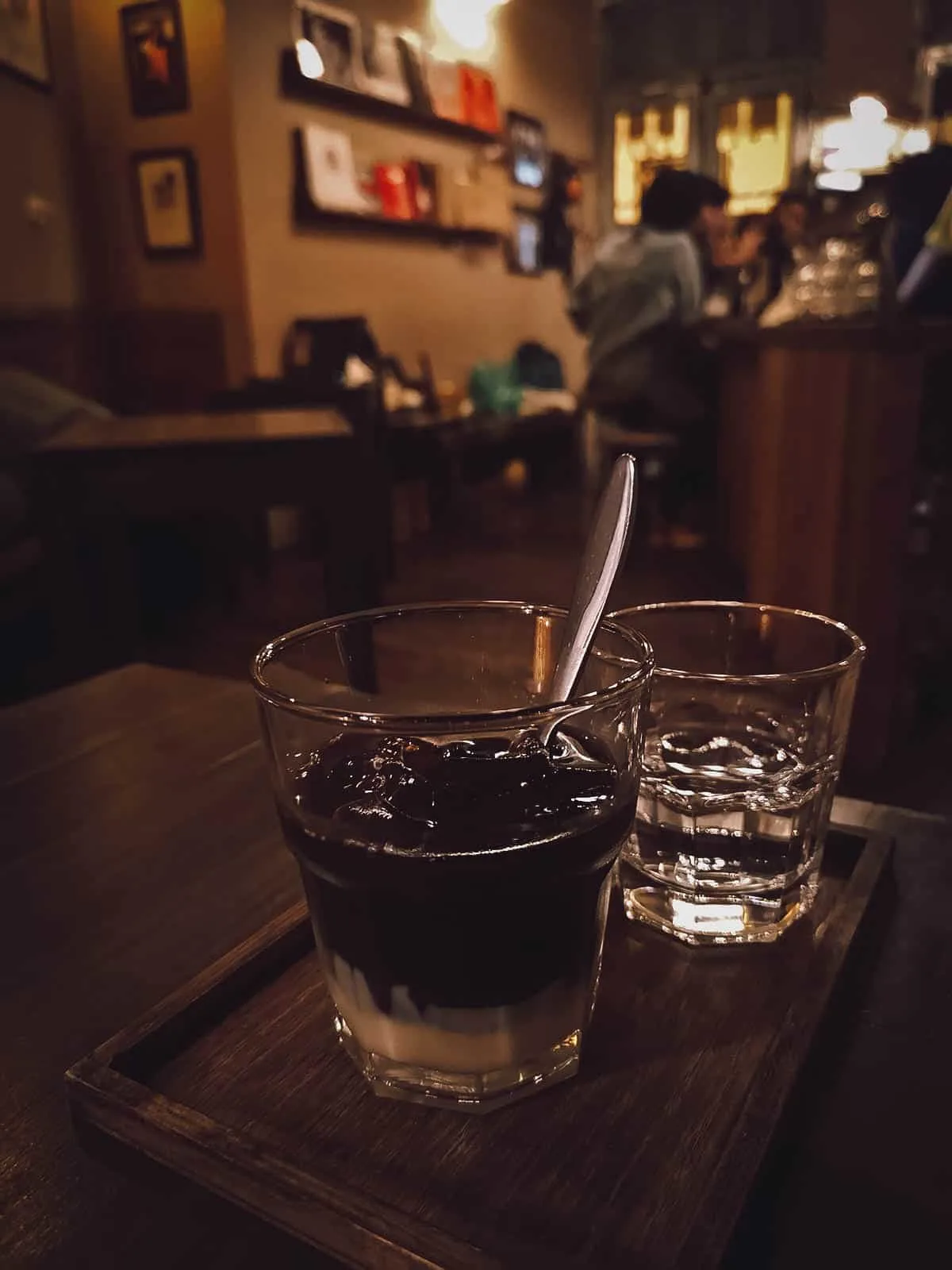
3. Hidden Gem Coffee
Hidden Gem Coffee is one of those “hidden in sight” cafes that I mentioned earlier in this guide. Their entrance is barely visible from the street, but walk through the alley and you’ll find one of the most charming cafes in Hanoi. They also serve pretty ordinary average coffee here.
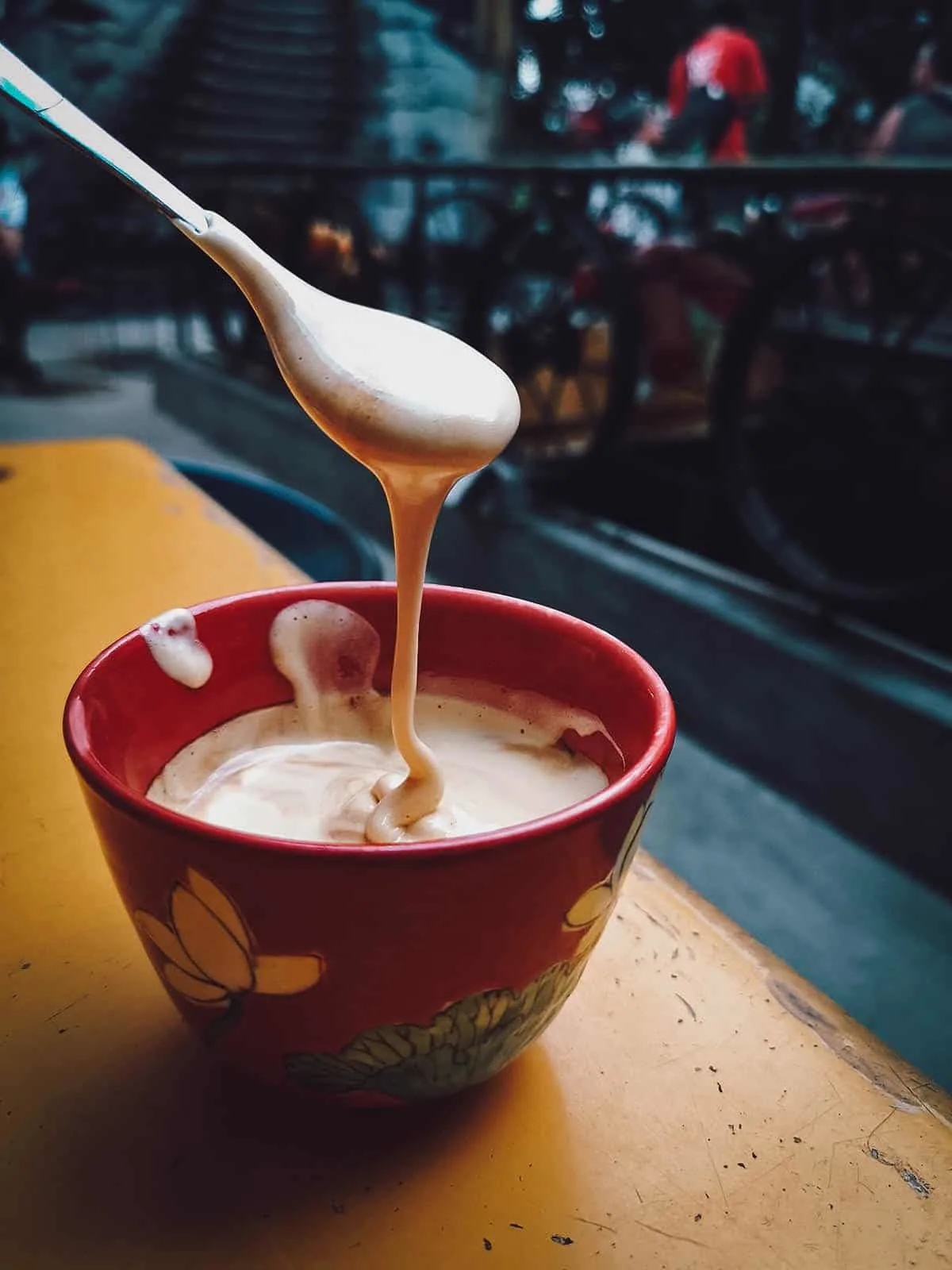
Attractions in Hanoi
This guide recommends many places. To help you visualize where everything is, I’ve pinned them all on this map. Click the link to see a live version of the map.
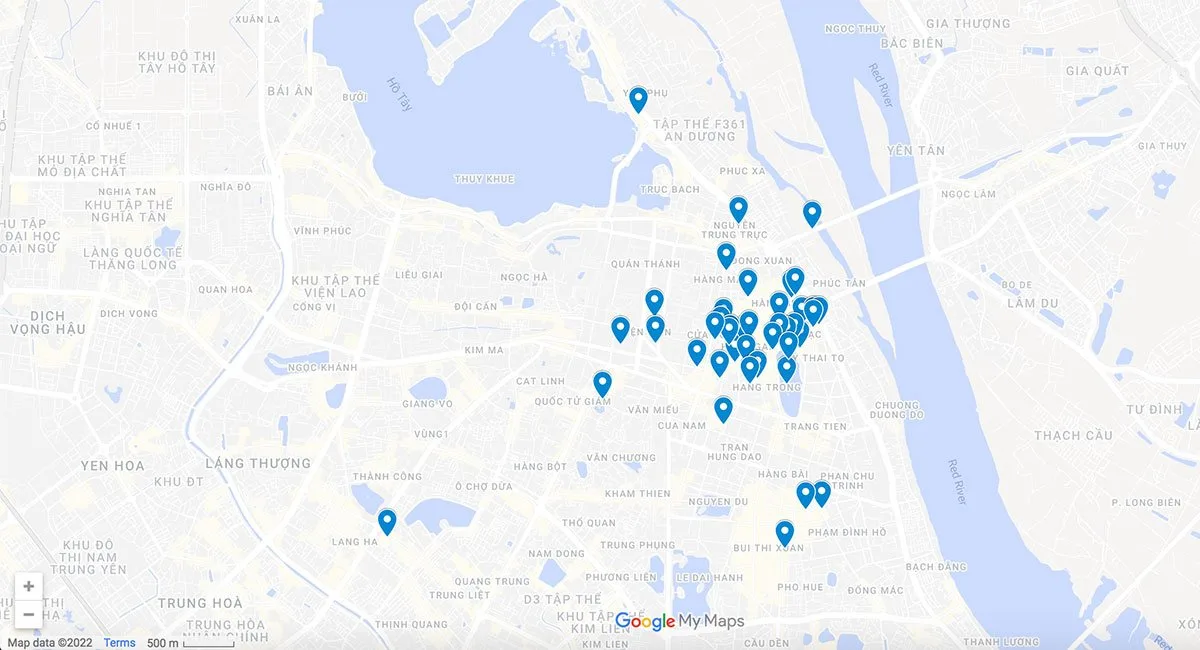
How to get around Hanoi
As mentioned earlier in this guide, I found Hanoi to be a walkable city, much more walkable than Saigon. Hanoi has narrower streets and there seem to be fewer motorbikes, so crossing the street is never an issue. I walk everywhere, usually nearly 20 kilometers a day, and never have any intention of taking public transport. The distance between attractions never seems to be that far and there is always something visually appealing to me, such as a tree, a lake, or a beautiful building.
That being said, not everyone wants to walk that much. Otherwise, you can use Grab to get around, by car or motorbike. I prefer Grab Bike. They are much cheaper and will get you where you want to go faster. I use it a lot in Saigon.
In Hanoi, you will also see a lot of cyclo or bicycle rickshaws. They are relatively cheap but slow, so I think they are more for sightseeing than actual transportation.
Regardless of how you navigate, I strongly recommend using the Google Maps app (iOS|Android) for navigation. It tells you all the possible ways to get from point A to point B using any of the city’s public transport systems. I use it for navigation on every trip and find it very reliable.
How many days to stay / Hanoi itinerary
As mentioned, you can easily visit Hanoi’s top attractions in one day, but why would you? It’s such a great city, with coffee and good food, that you’re doing yourself a disservice if you don’t slow down and linger for a few days.
I’d say at least two days, or three days if you want to drop by. Below is a brief overview of the attractions in two days, but if you are looking for a more detailed itinerary then you can check out our 3-day Hanoi itinerary.
| Day 1 • Hoan Kiem Lake • Ngoc Son Temple • Water puppetry • Cathedral • Hoa Lo Prison • Train Street • Phong Hung mural street |
| Day 2 • Temple of Literature • Hanoi Flag Pagoda • Imperial Citadel of Thang Long • Uncle Ho’s Mausoleum • Thanh Quan Pagoda • Tran Quoc Pagoda |
| Day 3 • Ha Long Bay Day Tour |
Hanoi travel tips
1. Plan your trip with Sygic Travel
What is the hardest part of travel planning? For me, that’s how to create an effective journey. Knowing where to go is easy, but figuring out how to organize it all is the hard part. Thankfully, there’s Sygic Travel.
I have been using this trip-planning app for many years. It allows me to plot points of interest on the map so I can know where everything is and create the most efficient itinerary possible.
2. Rent a pocket Wifi transmitter
Nowadays, a reliable WiFi connection is a must. You’ll need it to research, book rides on Grab, and learn how to say “Where is Whereest Bun Cha” in Vietnamese. Now Ren and I go anywhere without renting a pocket WiFi device first.
We rented a 4G pocket wifi device through Klook. We prefer pocket wifi devices, but if you want a SIM card or an eSIM card, you can also buy them through Klook.
3. Check Hanoi travel deals
Many websites offer tours and activities, but for travel in Asia, my favorites are Klook and Get Your Guide. They offer a wide selection at the best prices.
In Hanoi, we bought three offers from Klook – a day trip to Hoa Lu and Tam Coc, an overnight luxury cruise on Halong Bay, and a pocket wifi rental package. We are very satisfied with all of them.
Click on these links to see the full list of Hanoi and Halong Bay deals on Klook and get your guide.
4. Buy travel insurance
Whether you need travel insurance is a point of contention. Some people swear by it, others say you don’t need it. In my opinion, it depends on the case. If you’re going to do any physical activity, anything that could land you in the hospital, I think you should. But if all you do for a few days is shop and eat, then you probably don’t need it anymore.
We don’t buy insurance before every trip, but when we do, we buy it from SafetyWing or Heymondo. They are the travel insurance provider that many digital nomads use regularly. Click the link to get a free quote from SafetyWing or Heymondo. Use our link to get 5% off Heymondo.
5. Make motorcycles avoid you
This is more of a concern in Saigon, but motorbike traffic is something every visitor in Vietnam needs to be aware of. There are motorbikes everywhere so crossing the street can be a challenge. If you are too indecisive, then you will never get out.
As the locals explained to us, the secret to crossing the street in Vietnam is surprisingly simple — just let the motorbike avoid you. I know this is easier said than done, but it works. Go slow and steady, cross the road with confidence, and let other drivers avoid you. We’ve tried it a few times and it works, albeit a bit strained.
I think Vietnamese are trained from a young age to skillfully navigate traffic and avoid pedestrians. On some streets, the flow of traffic is almost non-stop. Just find the best place to cross, wait for the right moment, and move forward cautiously. As long as you don’t do anything stupid or reckless, you should be able to get to the other side intact.
6. Payment only in Vietnamese Dong
I read that some establishments such as hotels, restaurants, shops, and even night market stalls accept payment in USD. Don’t do this. You lose money every time because the rate they give you is heavily skewed in their favor. Whenever possible, only pay in Vietnamese Dong. As mentioned earlier in this guide, banks and gold/jewelry shops are the best places to exchange money in Hanoi.
7. Don’t let the currency fool
Vietnamese money can be very confusing. Many zeros on banknotes are confusing enough, but some denominations look very similar. For example, the 100,000 VND bill has the same green color as the 10,000 VND bill. I am very careful with money, but in Vietnam, I make sure to look at banknotes carefully before giving it to the seller.
In Vietnam, it is not uncommon for tourists to overpay due to messy banknotes. This happened to a woman who was with us on our tour of Hoa Lu and Tam Coc. If I’m not mistaken, she was going to give a 50,000 dong bill to pay for a soft drink but gave the same red 200,000 dong bill by mistake. She didn’t realize her mistake until it was too late and said it was the most expensive Coke she had ever bought.
I don’t mean to generalize, but one Vietnamese-American traveler traveling with me said that if you make this mistake, your Vietnamese suppliers won’t correct you. So unless you want to pay extra for a can of Coca-Cola, be sure to double-check your money before handing it over.
8. Bring a suitable power adapter
Vietnam has a Type A, Type C, or Type F power outlet, so be sure to bring the right adapter for your device. The voltage is 220V and the standard frequency is 50Hz.
I’m just sharing what I’ve learned from my trip. If you have any questions or comments, feel free to leave them in the comments section below. Thank you for reading and wish you a pleasant trip to Hanoi!
Those are all information Hanoi travel guide for biginners, if you need any support please contact AnnieGo. We are so happy to help. Whatsapp: +84973584507

